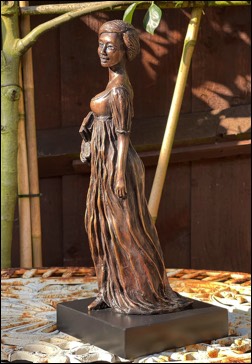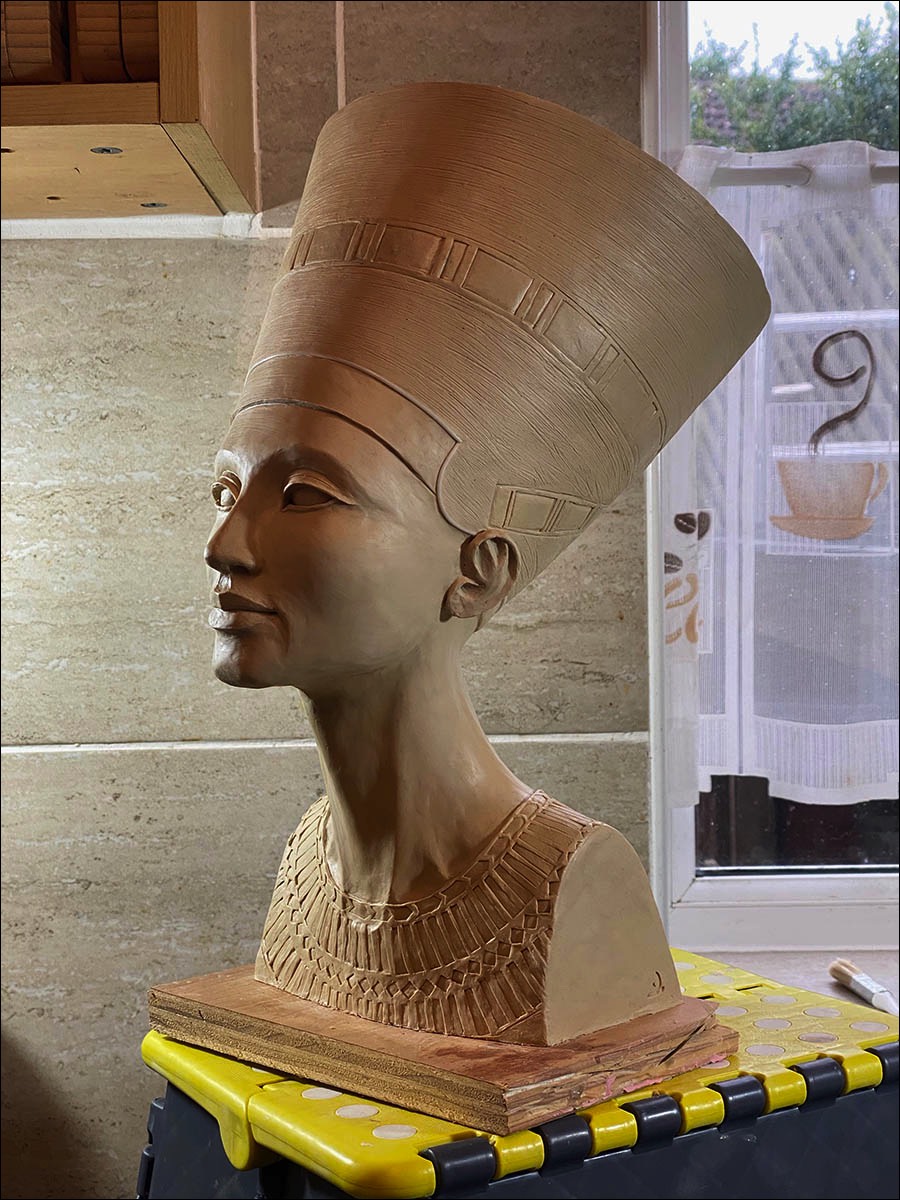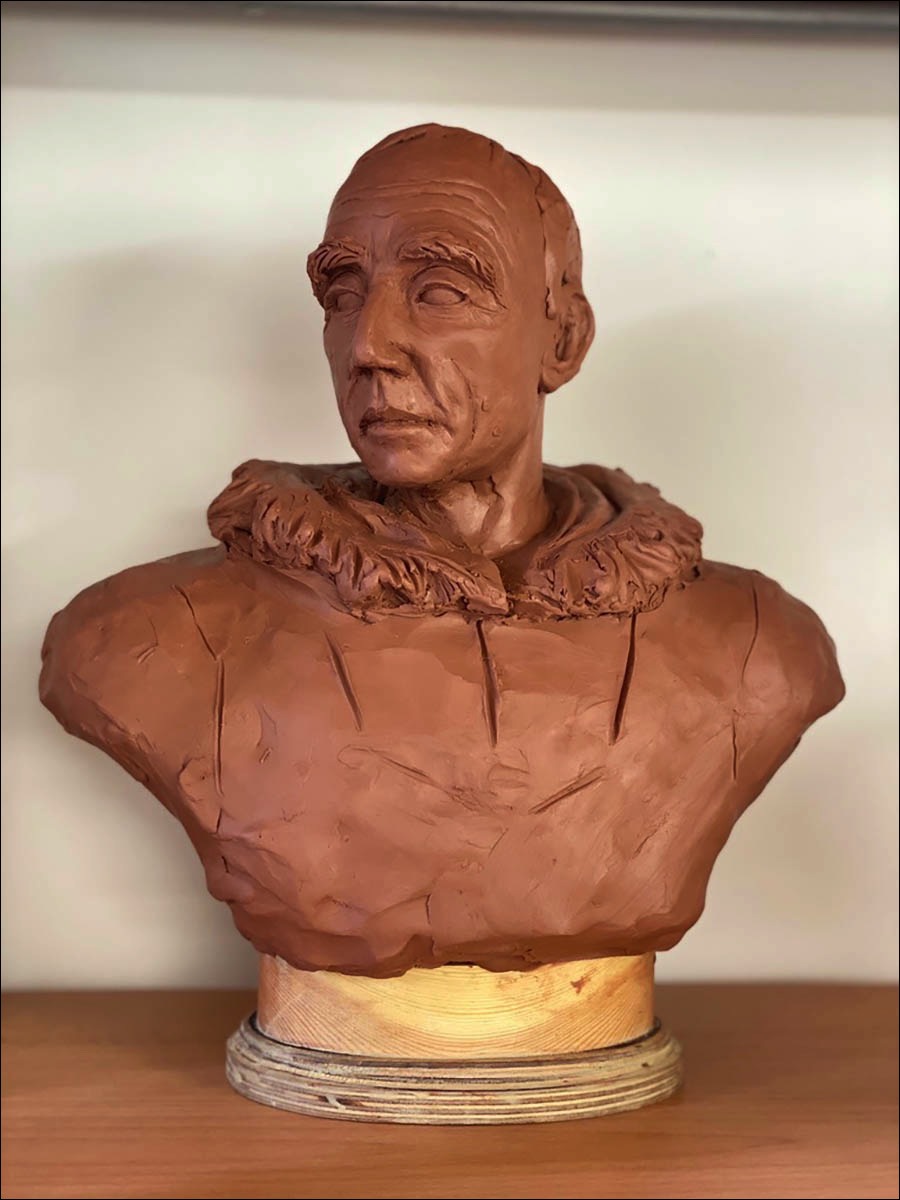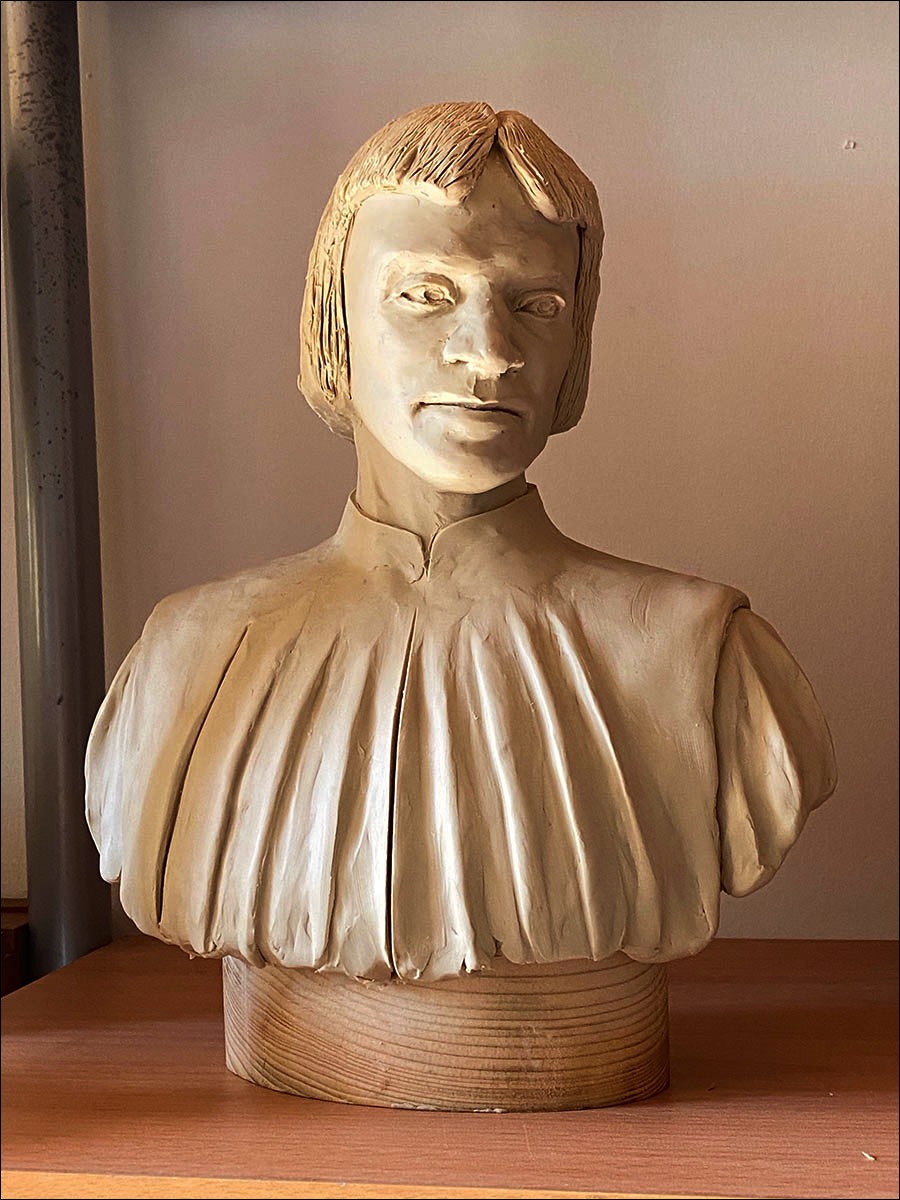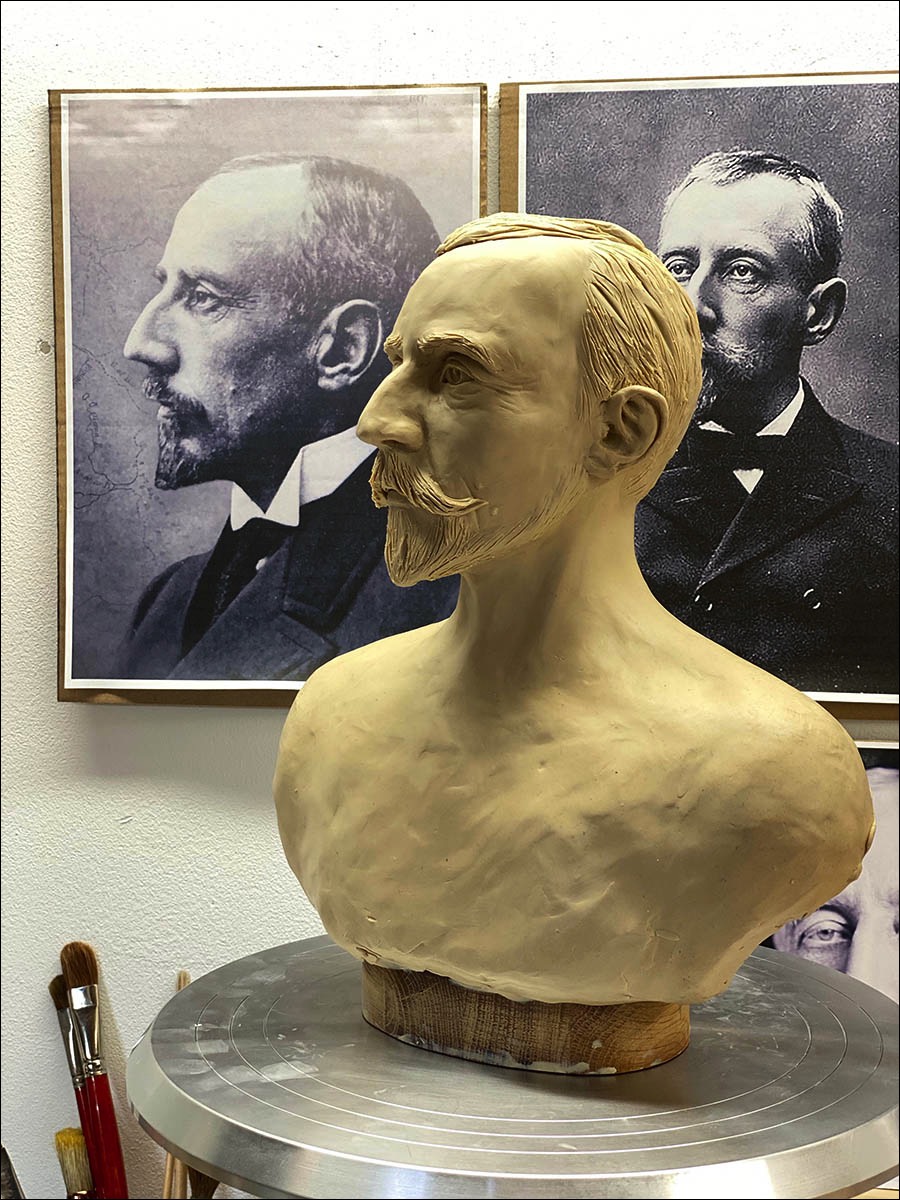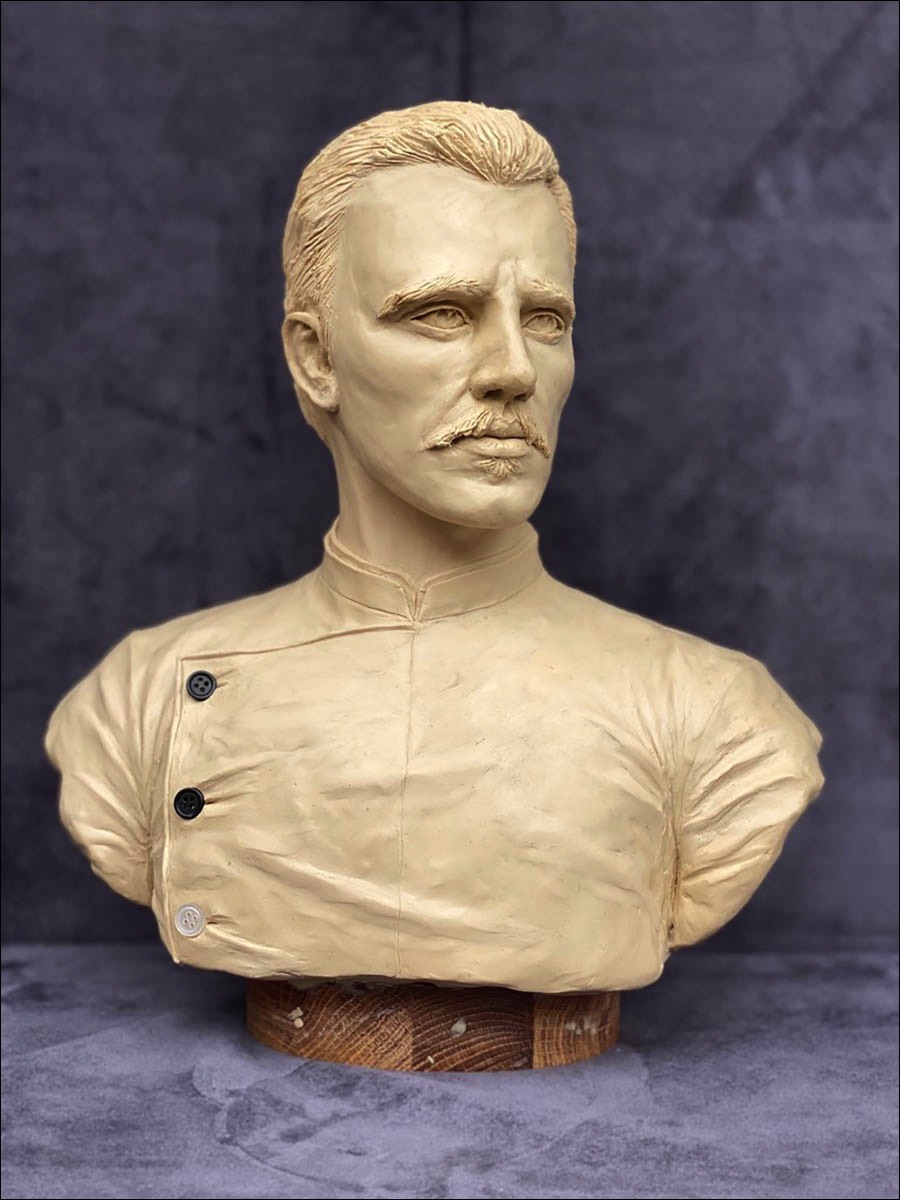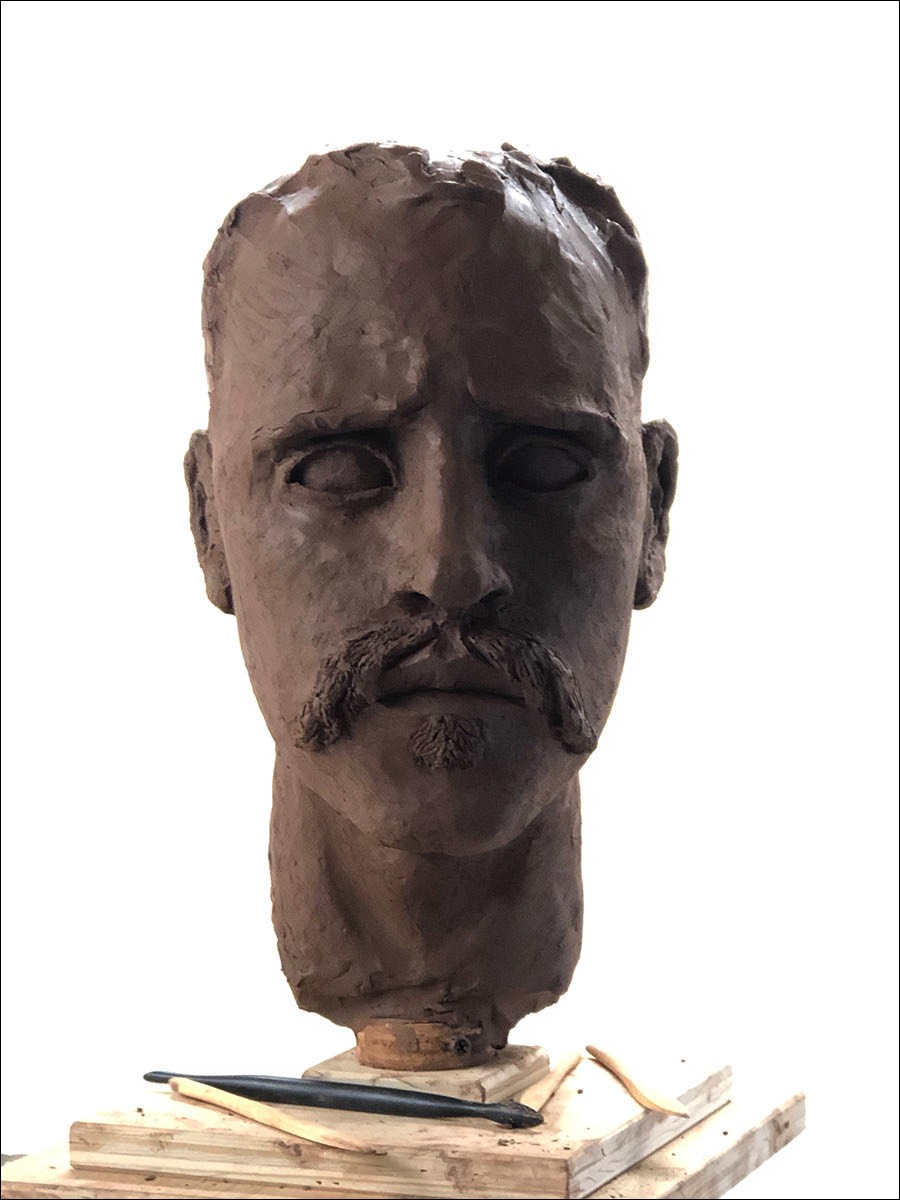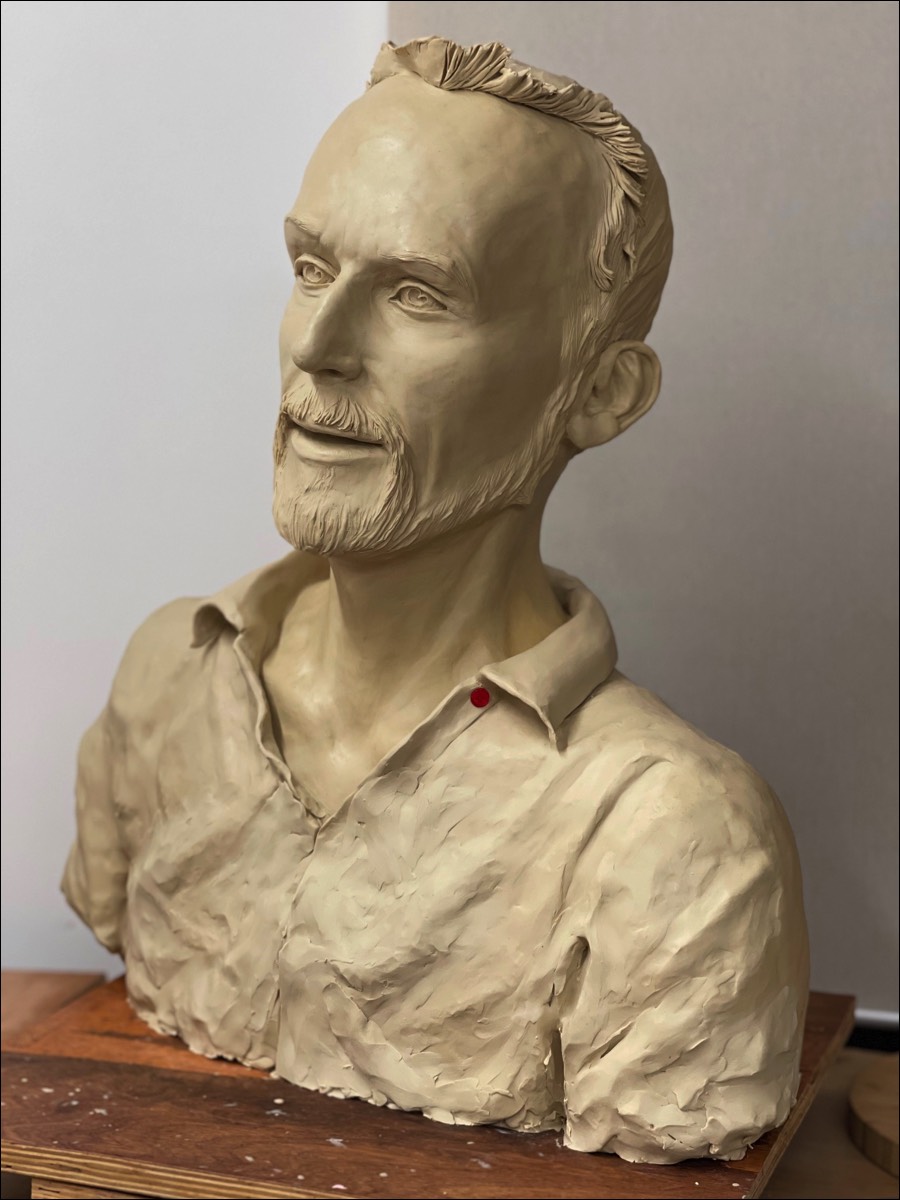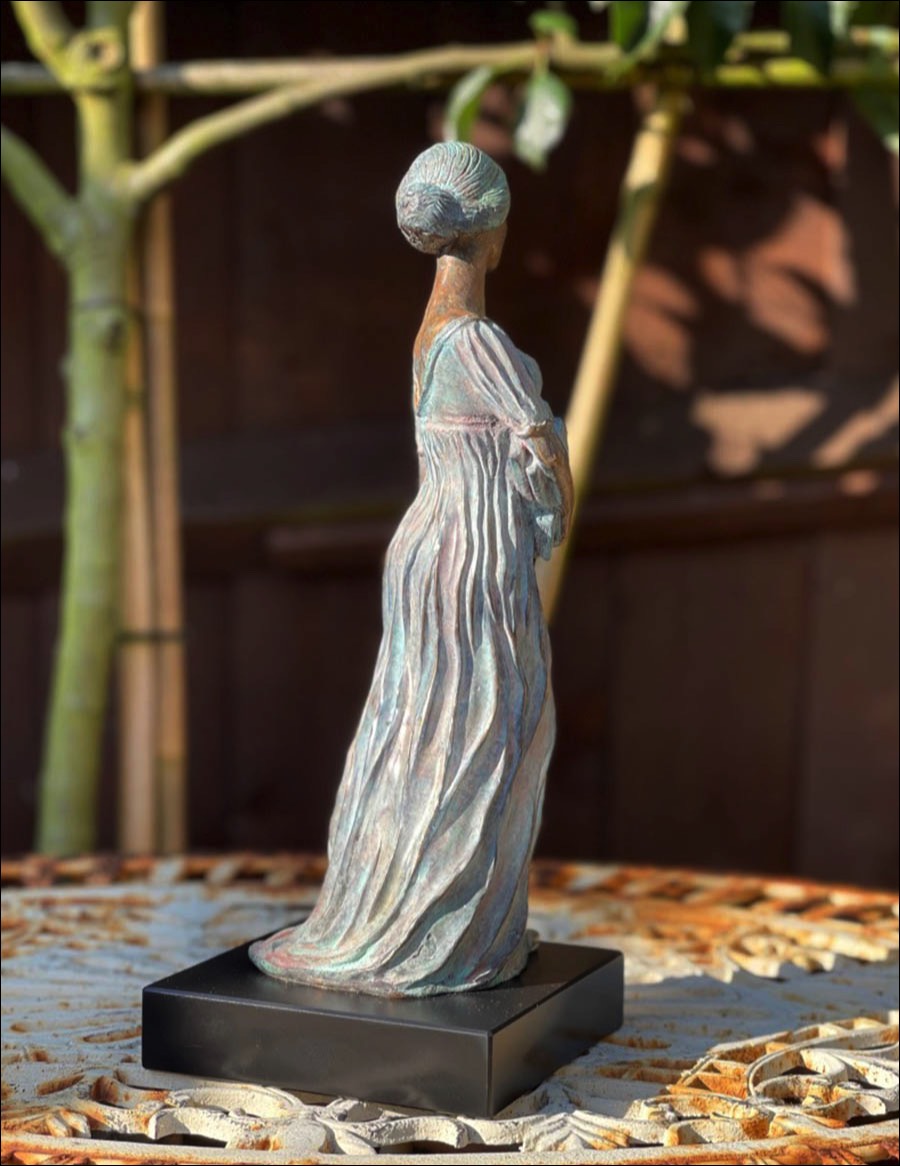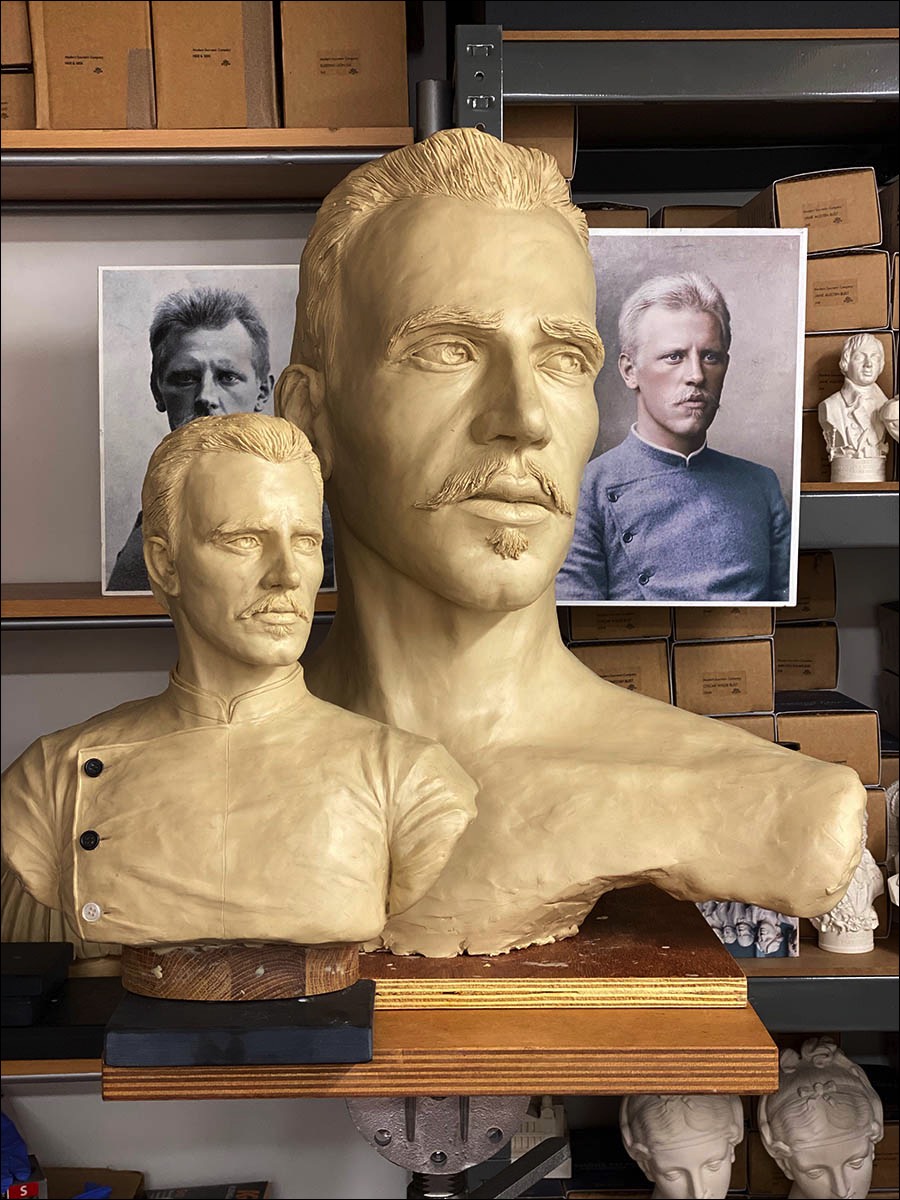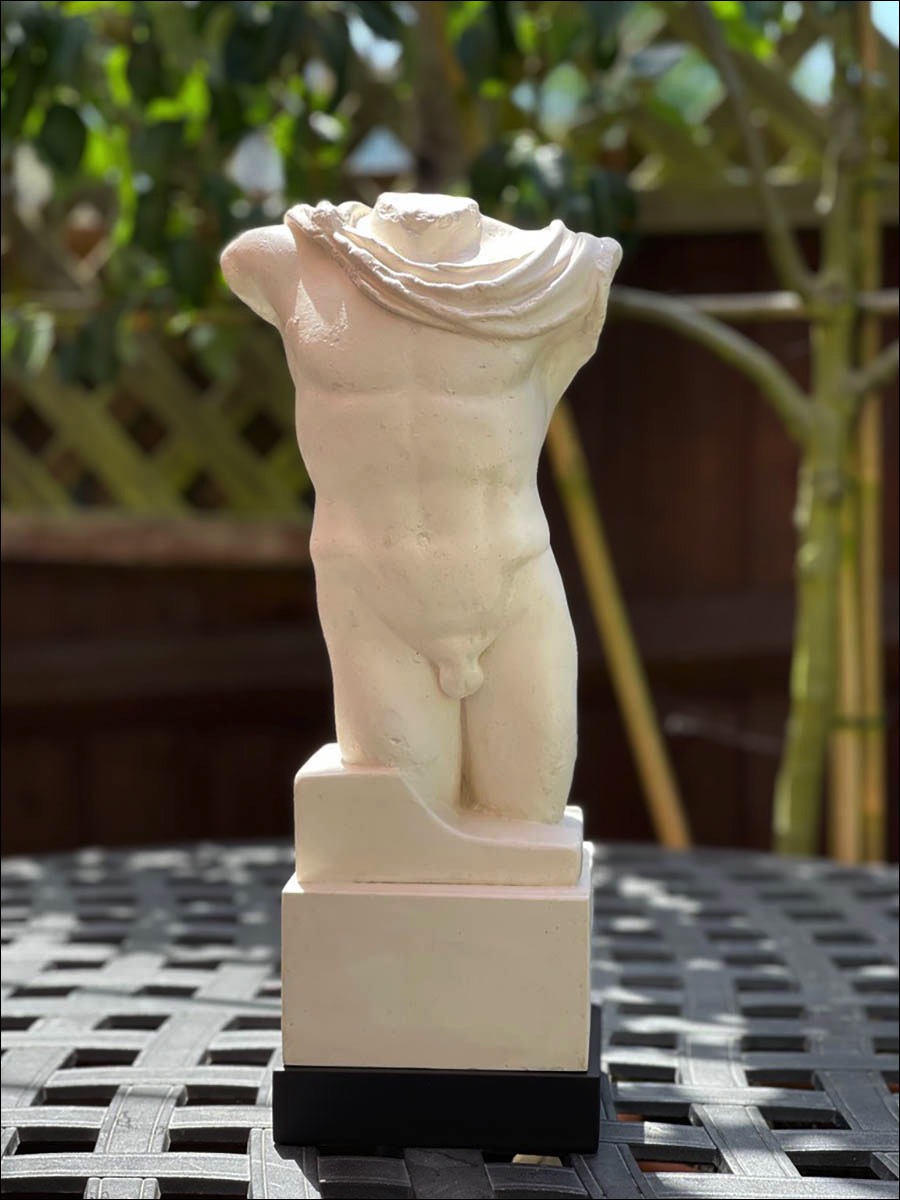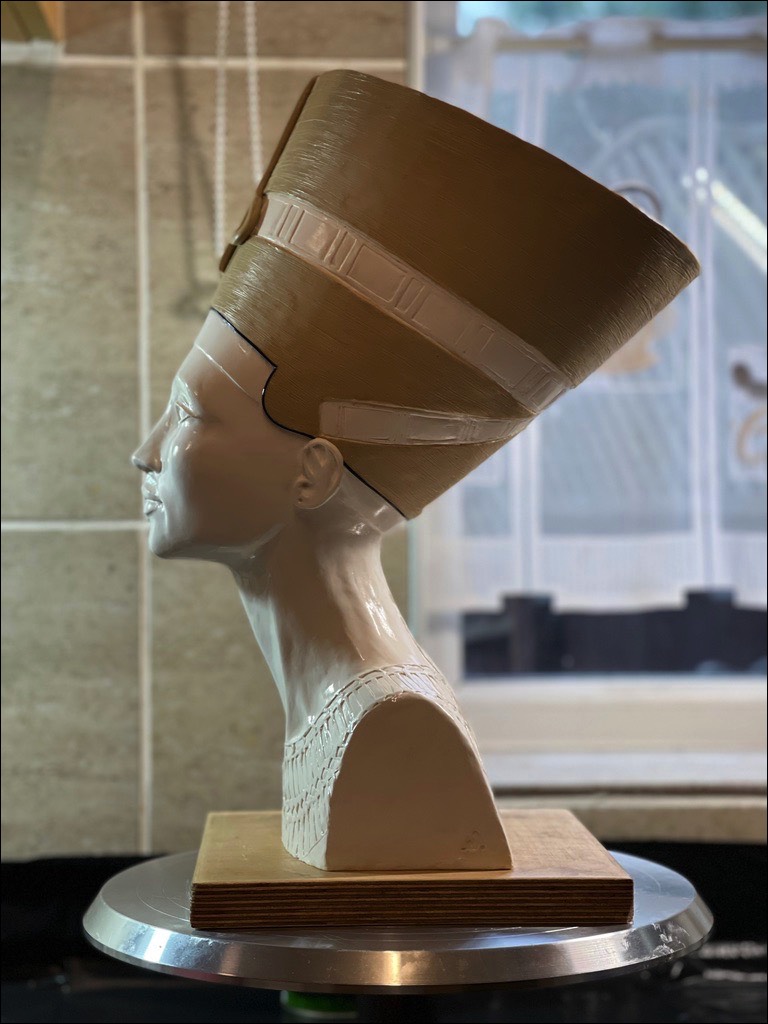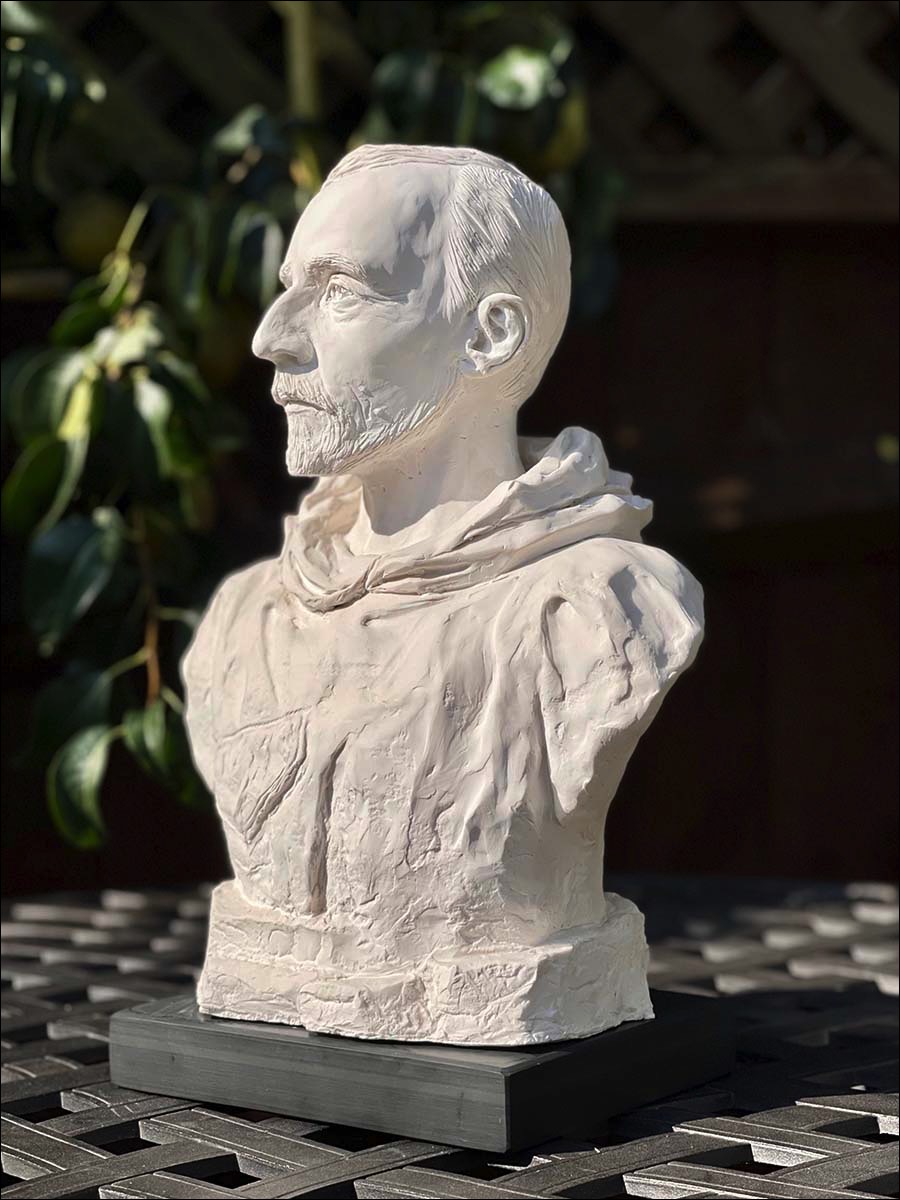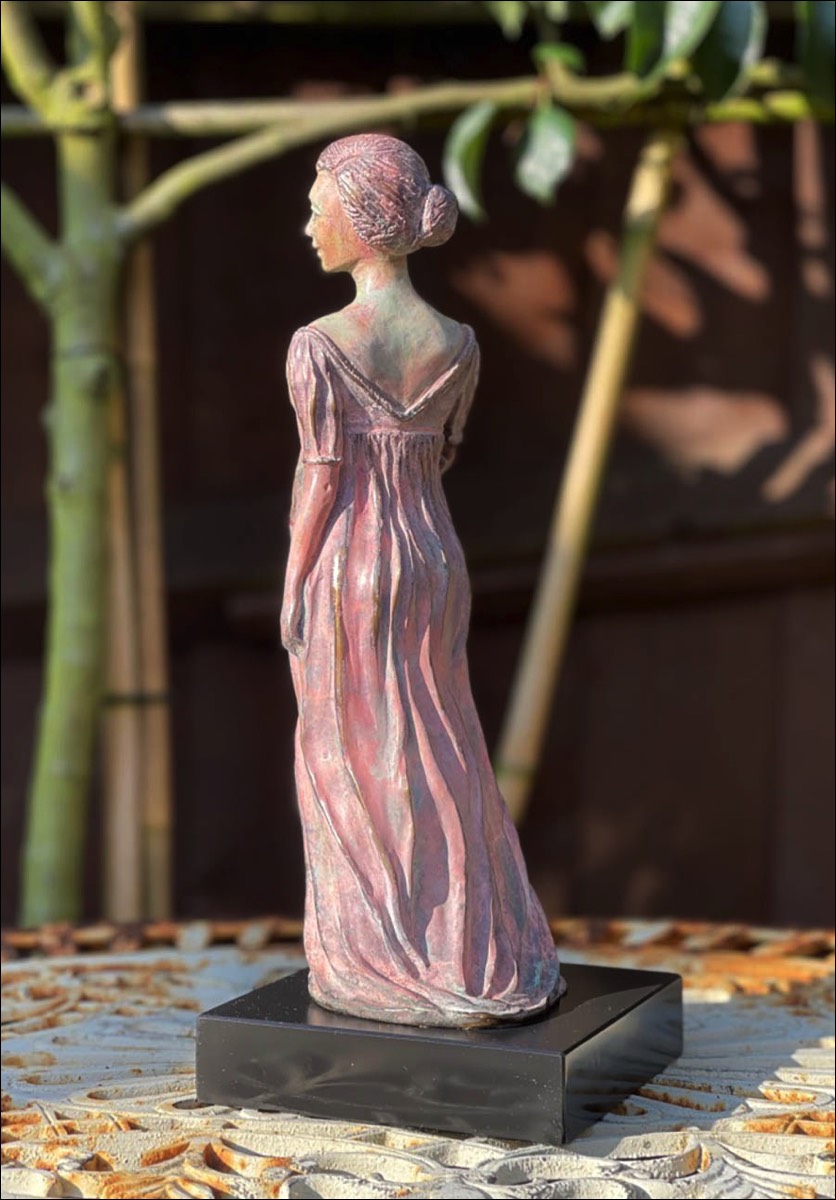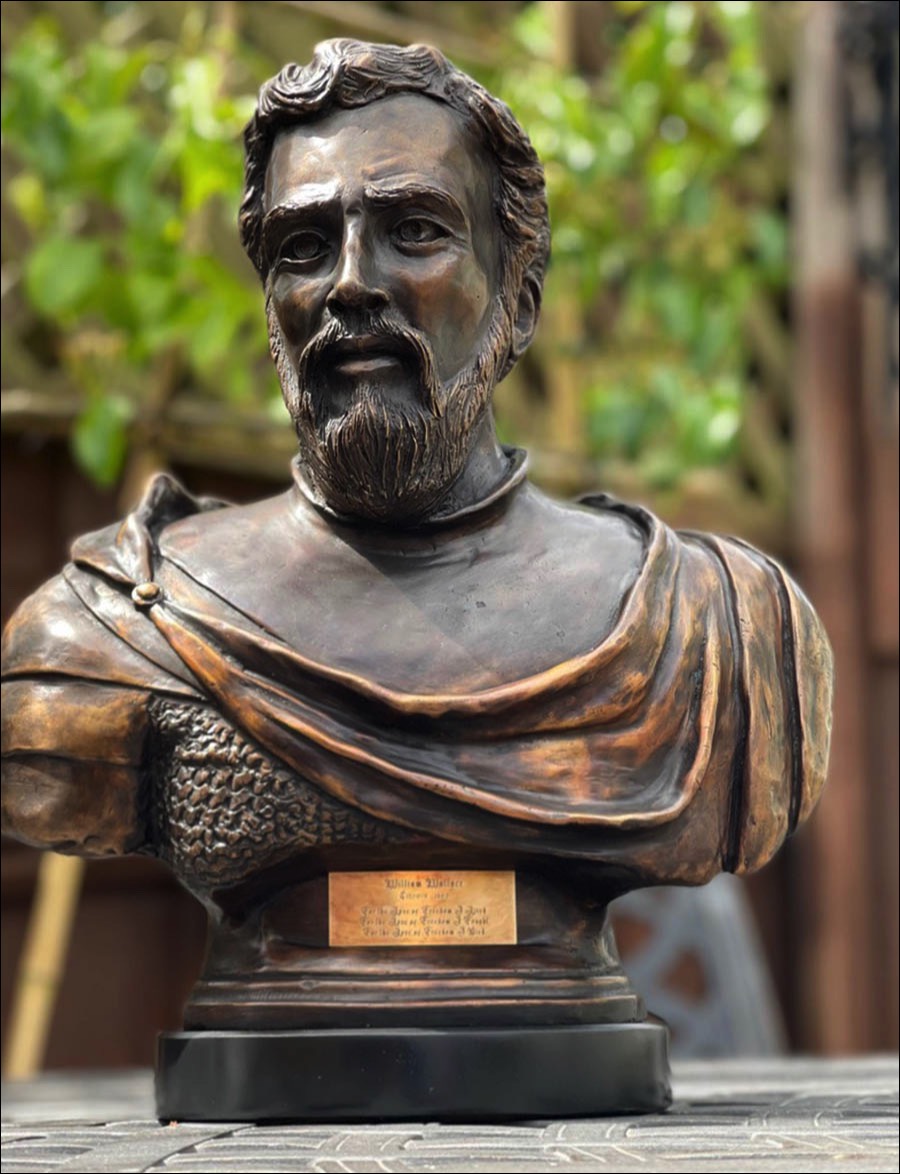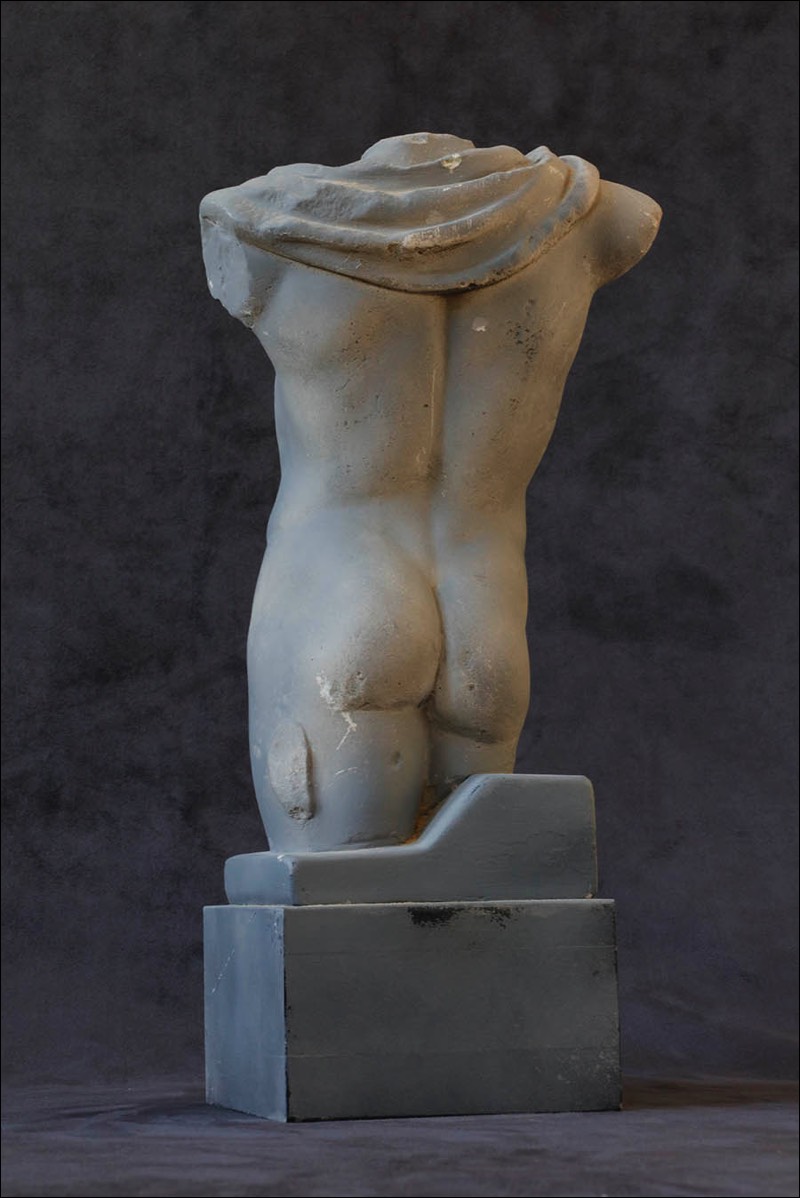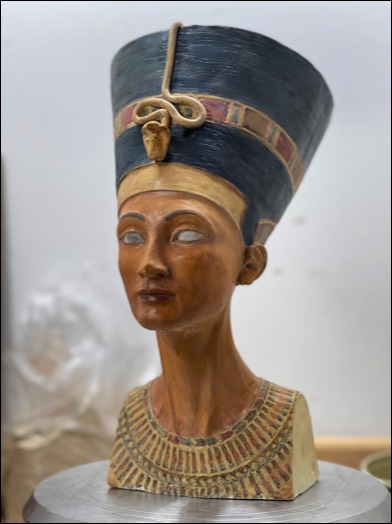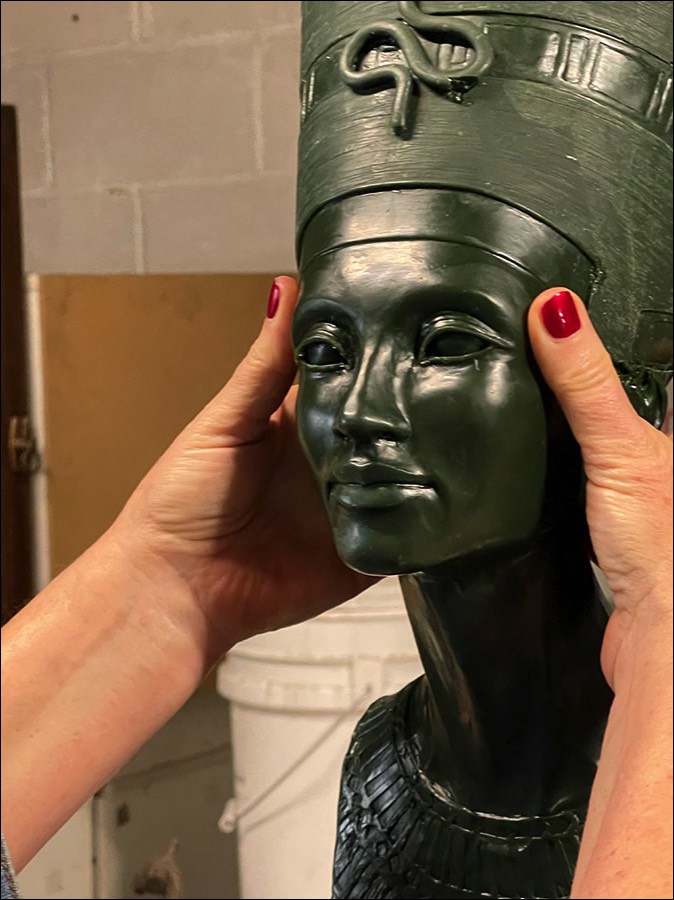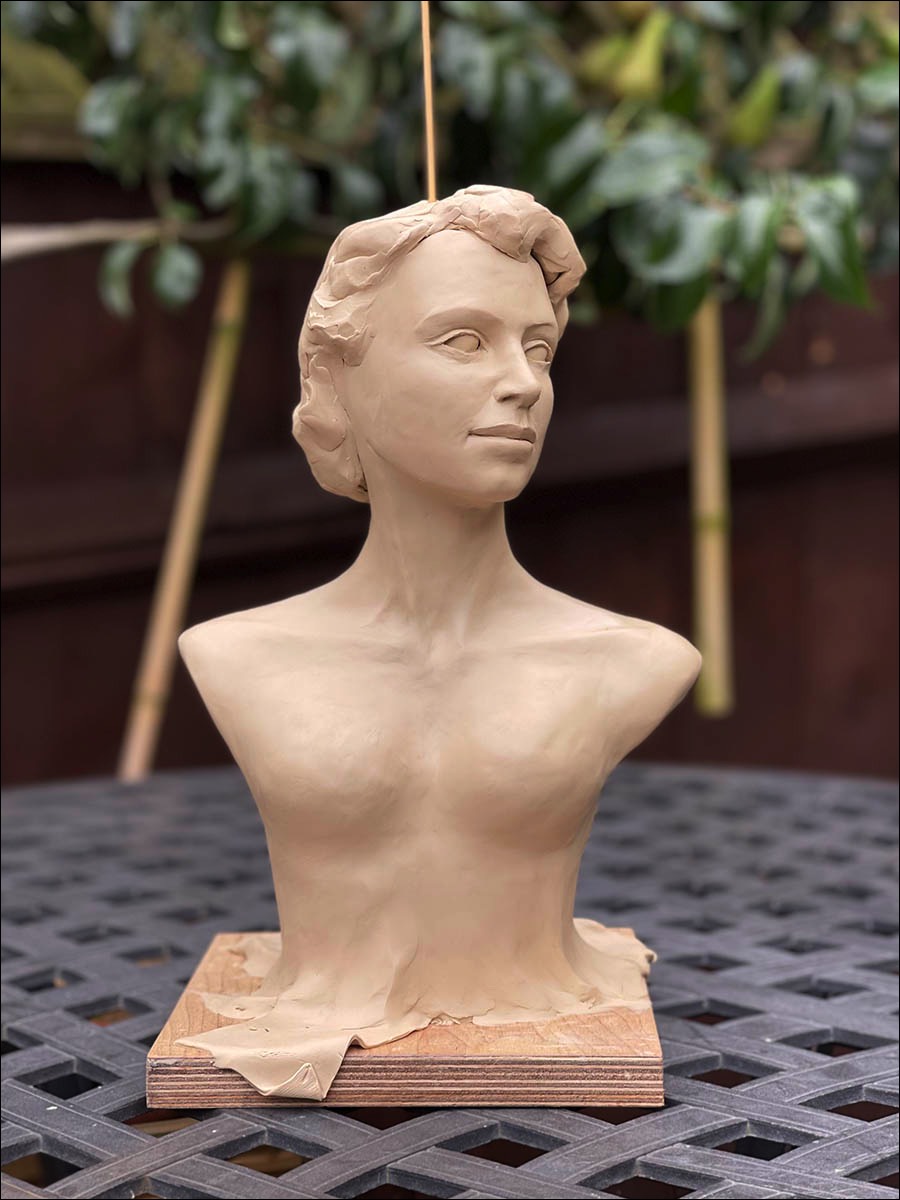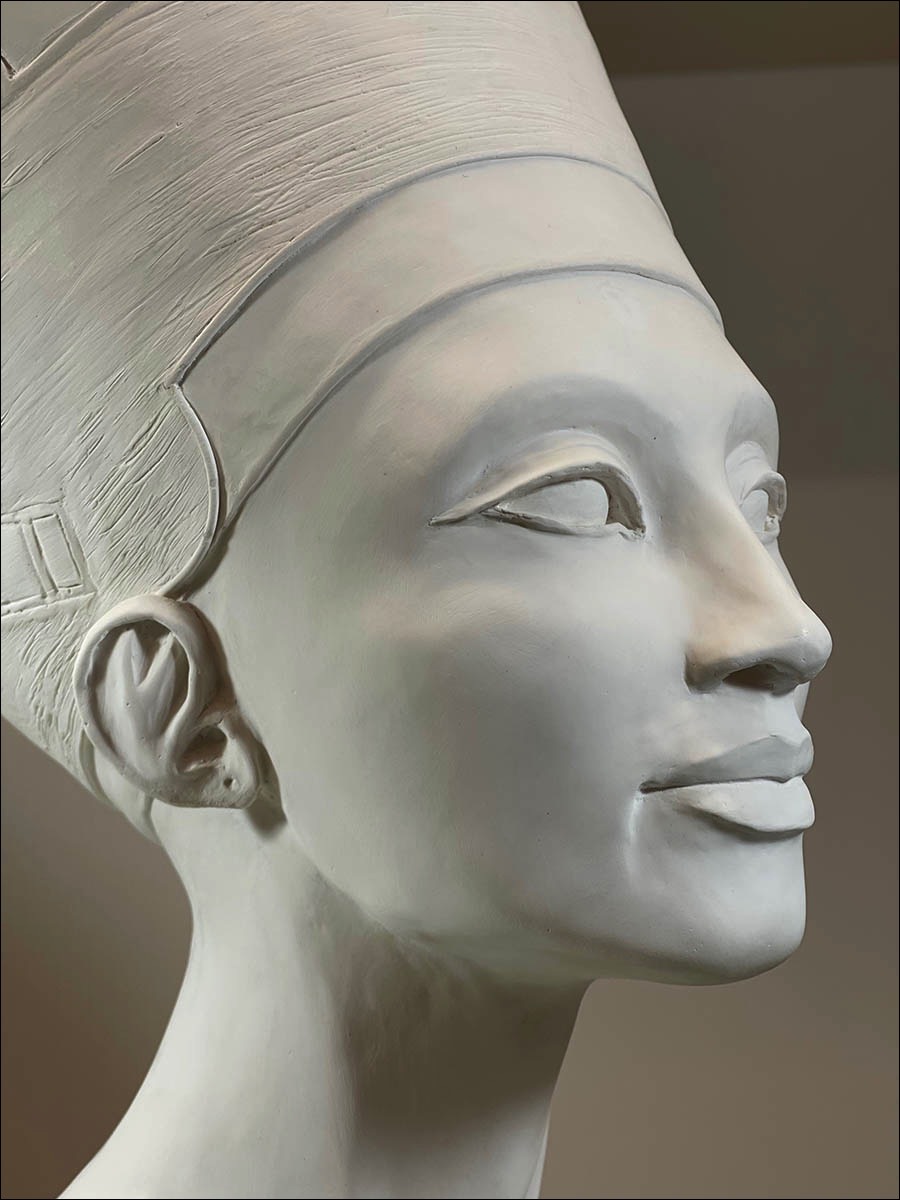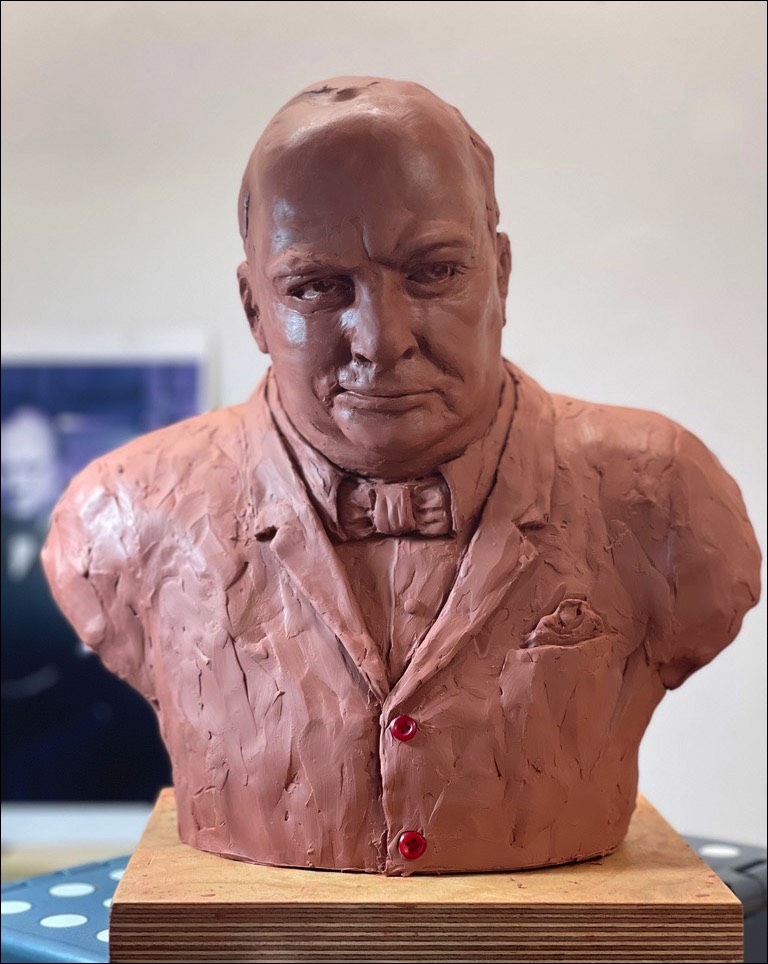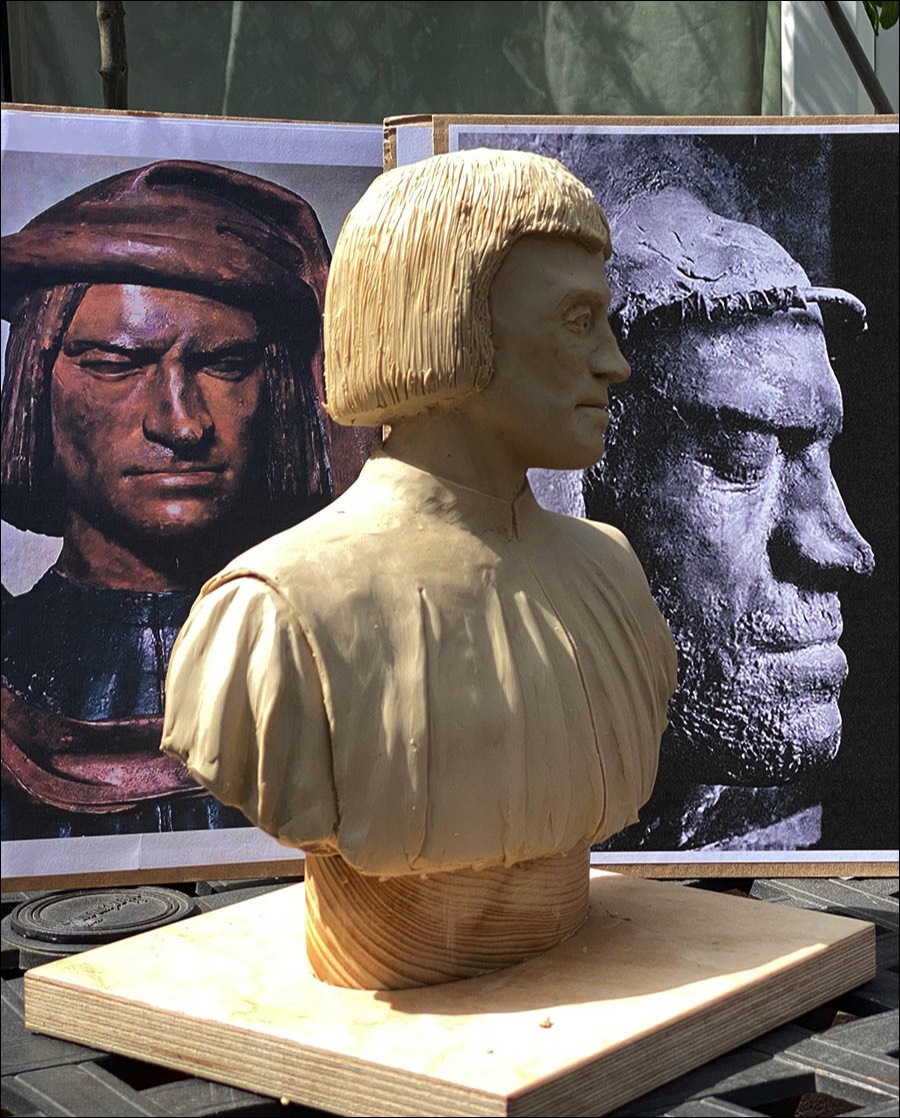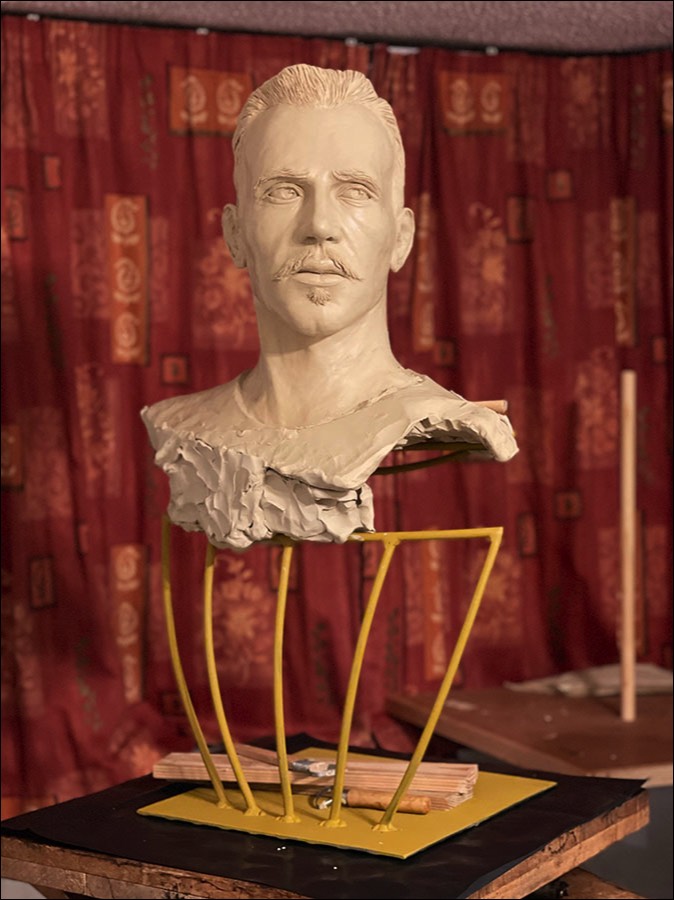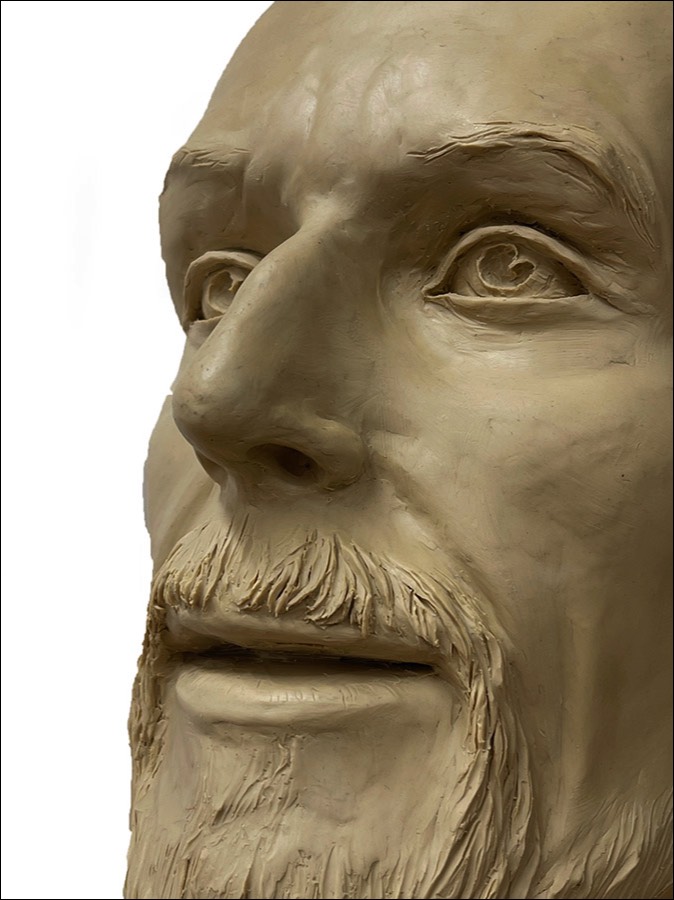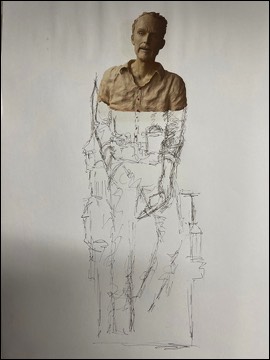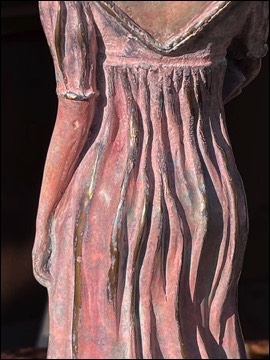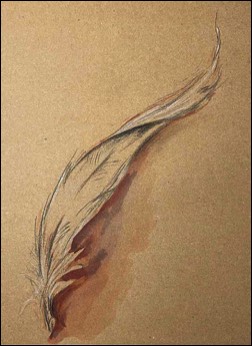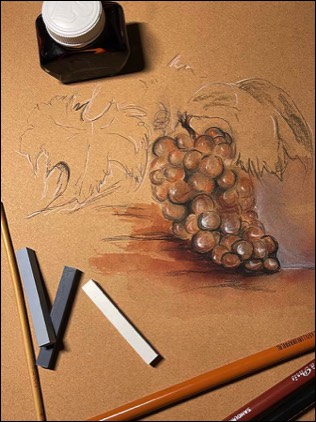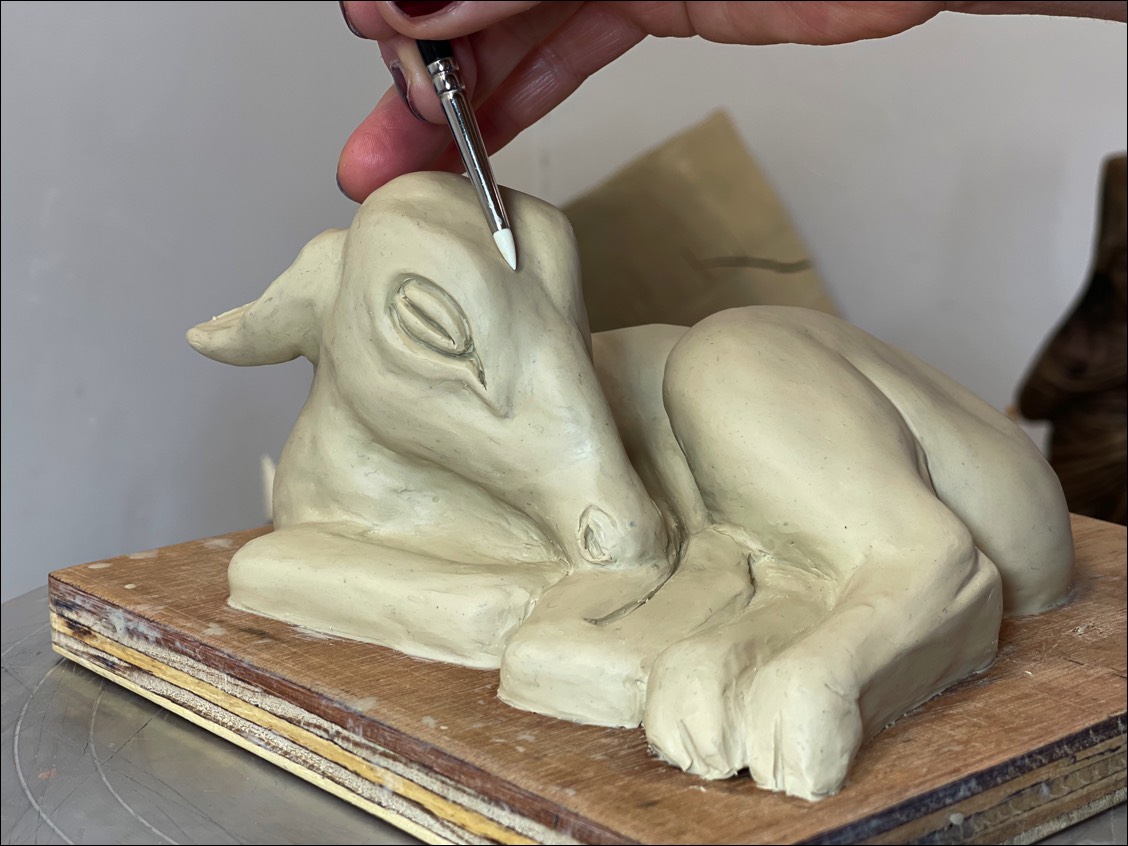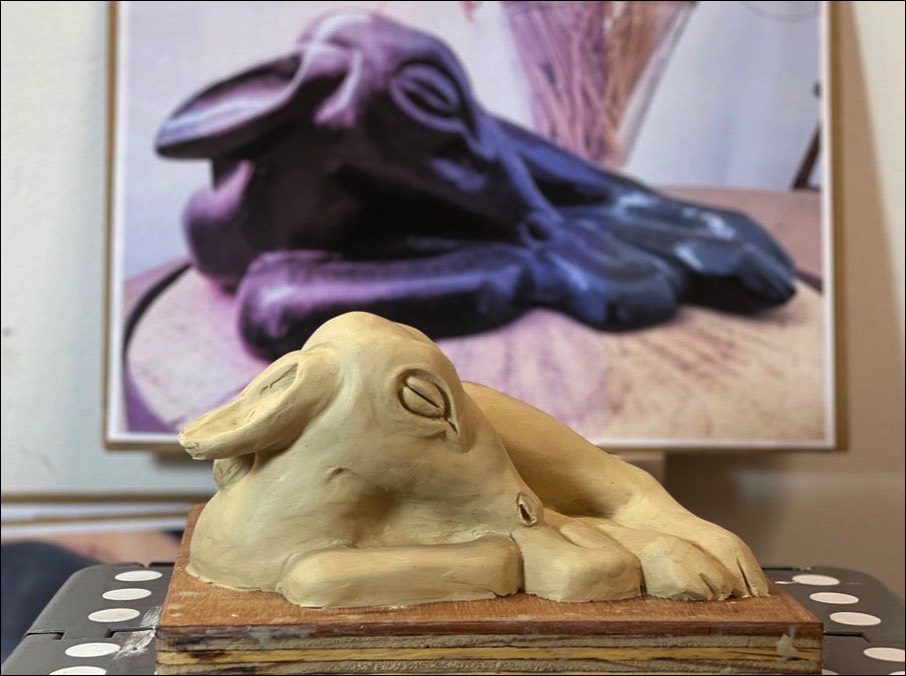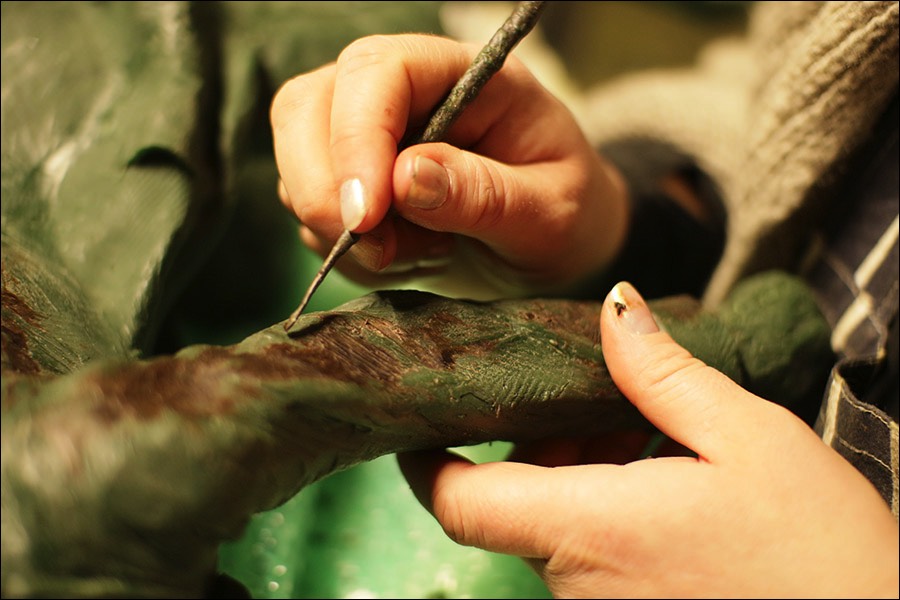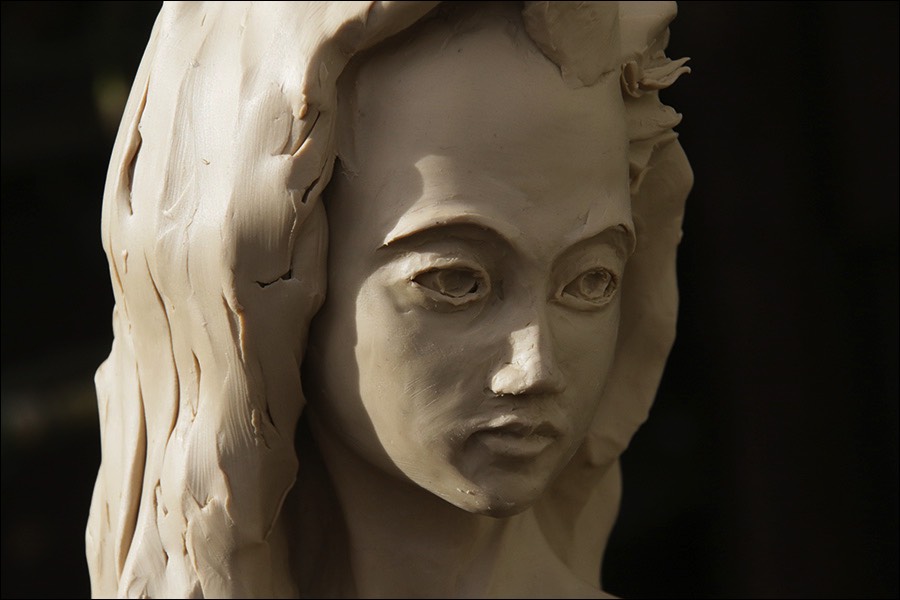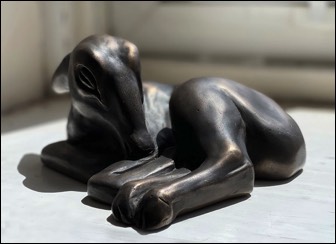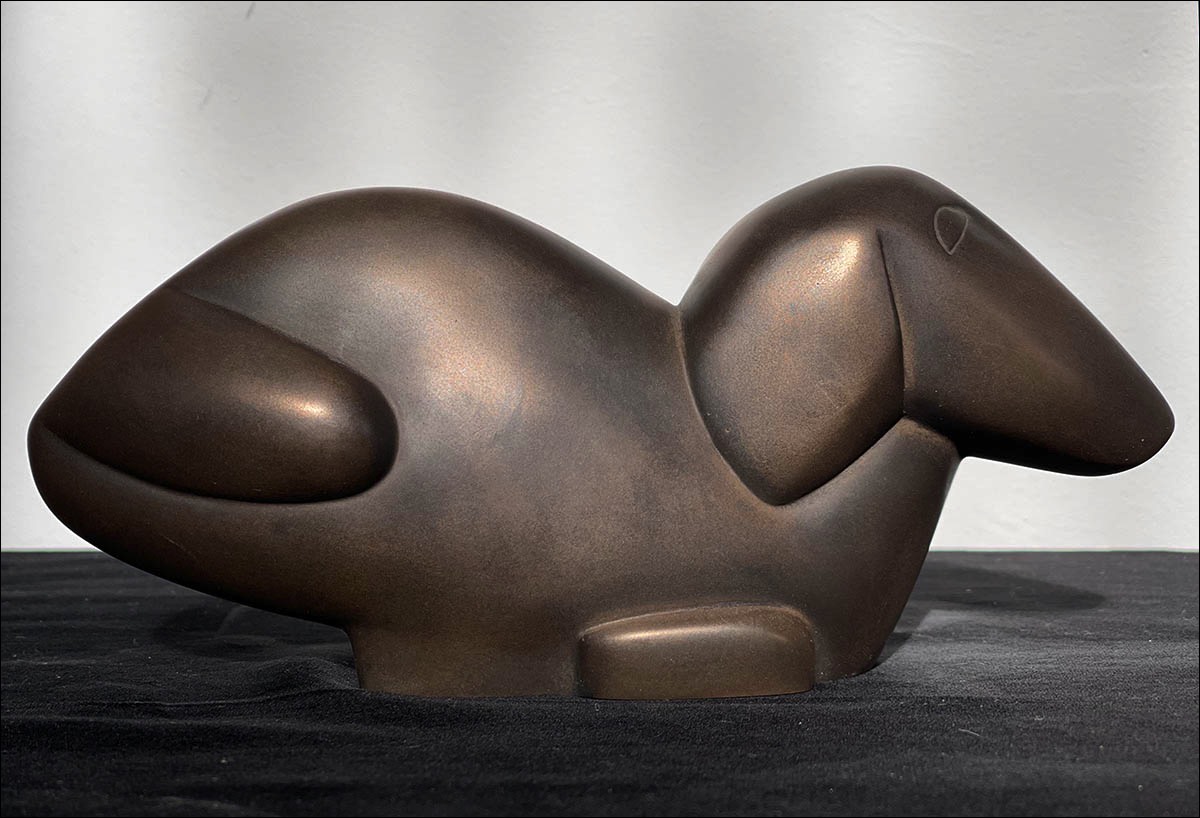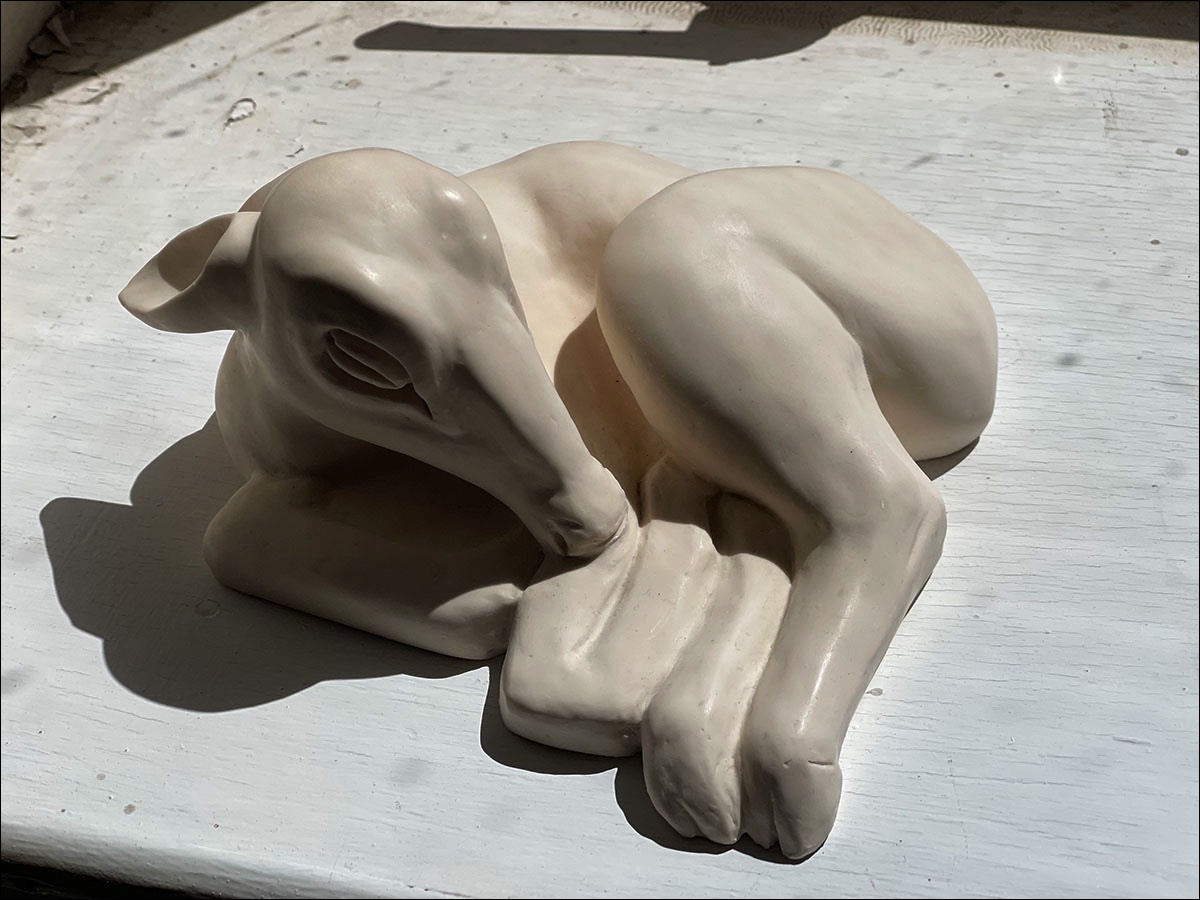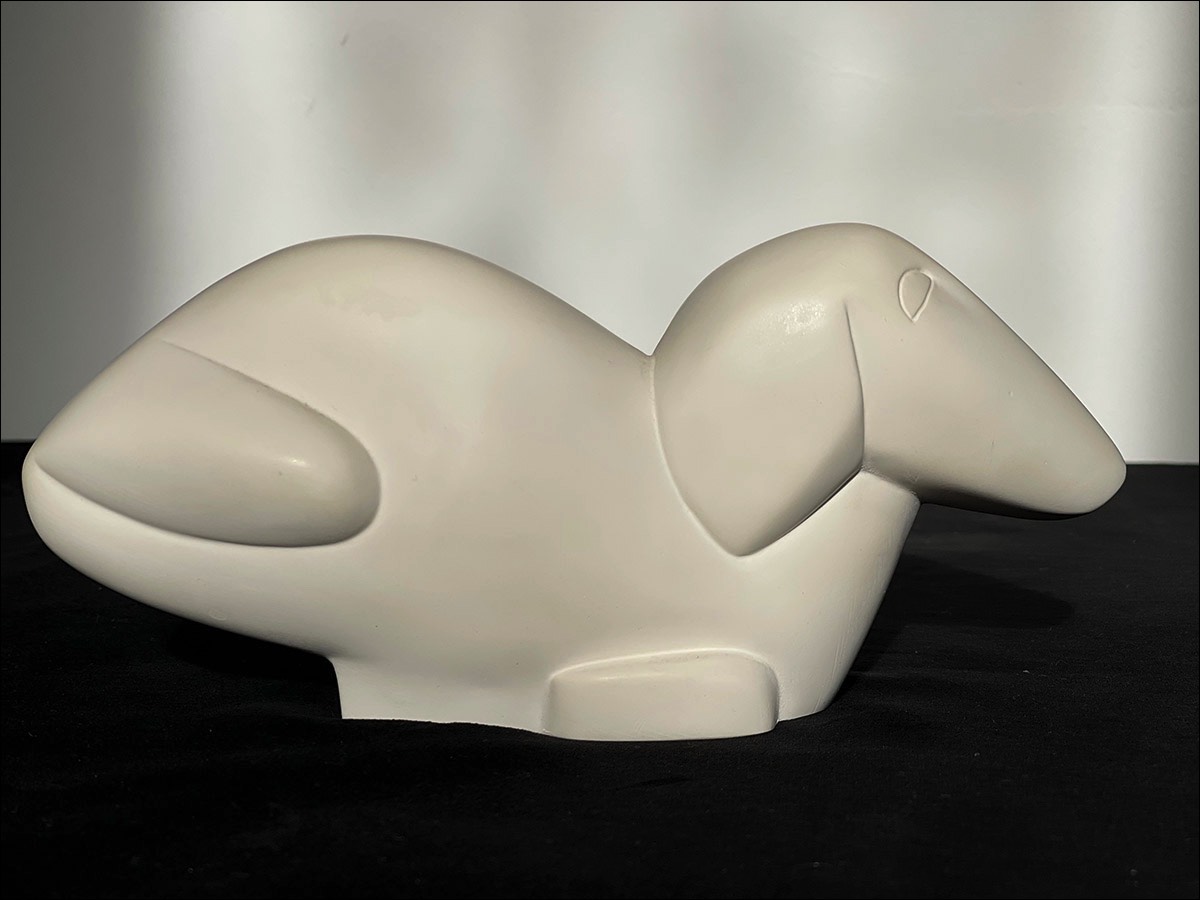
Henri - Gaudier Brzeska
Sculpture Replicas
Henri Gaudier-Brzeska (1891-1915) was one of the leading figures of European avant-garde sculpture. Gaudier played an important role in the development of modern sculpture in Britain, working alongside Ezra Pound, Jacob Epstein, Roger Fry, Wyndham Lewis and others.
Like many artists of his generation, his career was tragically cut short by the war. he lost his life at the age of just twenty-three.
His work was so expressive that even after such a short time of sculpting, his works are in all the large museums globally.
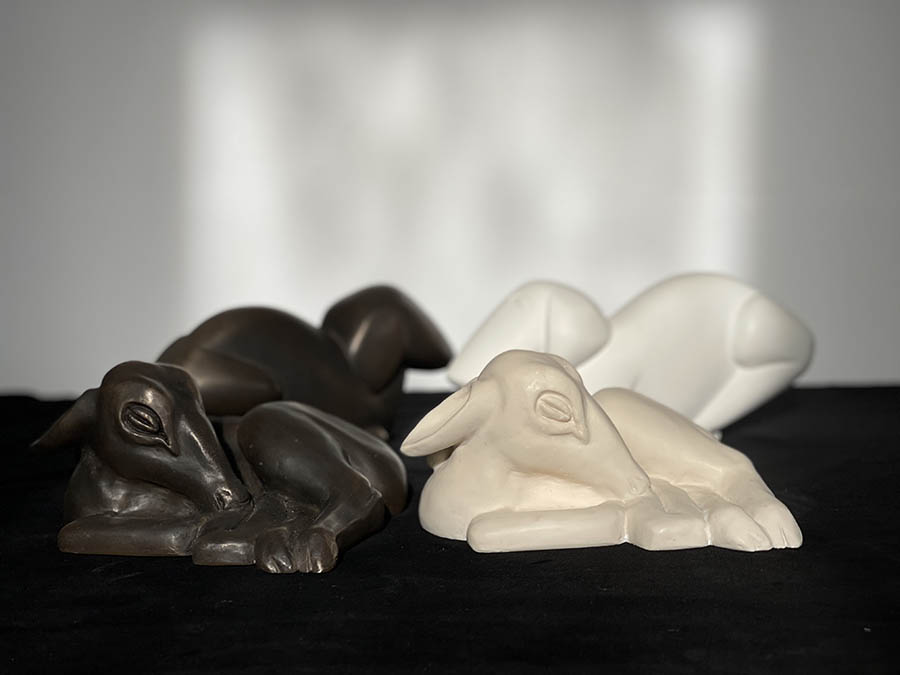
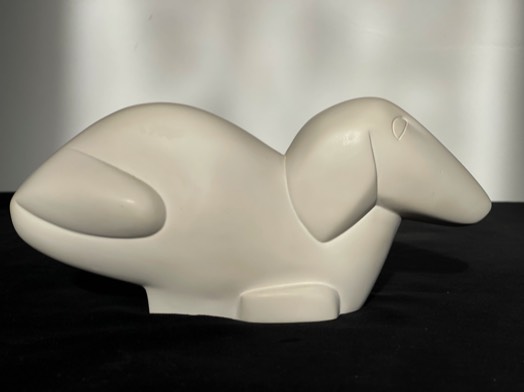
Gaudier-Brzeska Dog
White Plaster
This replica features Henri Gaudier-Brzeska's sculpture “Dog”. A posthumous bronze cast can be seen at Kettles Yard House and Gallery in Cambridge.
He himself became a founder member of the London Group and developed his distinctive carving style over the next few years. This sculpture is thought to be one of the last before his enlistment in the French army at the outbreak of World War I, when his life and career were tragically cut short at the age of 23, in 1915.
“It might be thought simple to make a sculpture like “Dog” by H. Gaudier-Brzeska, but so far as I know no one had done so in the whole world of sculpture, nor is it like any other sculptor’s work. It is essentially sculpture and at the same time is deeply realistic.
I have known a child take it to bed instead of his “Teddy Bear’. (Jim Ede 1984, A Way of Life).
Length 20cm
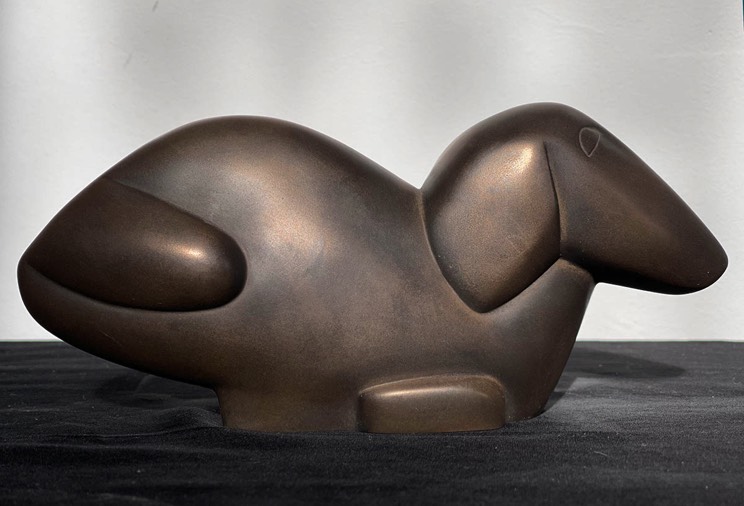
Gaudier-Brzeska Dog
Bronze Brown
This replica features Henri Gaudier-Brzeska's sculpture “Dog”. A posthumous bronze cast can be seen at Kettles Yard House and Gallery in Cambridge.
He himself became a founder member of the London Group and developed his distinctive carving style over the next few years. This sculpture is thought to be one of the last before his enlistment in the French army at the outbreak of World War I, when his life and career were tragically cut short at the age of 23, in 1915.
“It might be thought simple to make a sculpture like “Dog” by H. Gaudier-Brzeska, but so far as I know no one had done so in the whole world of sculpture, nor is it like any other sculptor’s work. It is essentially sculpture and at the same time is deeply realistic.
I have known a child take it to bed instead of his “Teddy Bear’. (Jim Ede 1984, A Way of Life).
Length 20cm
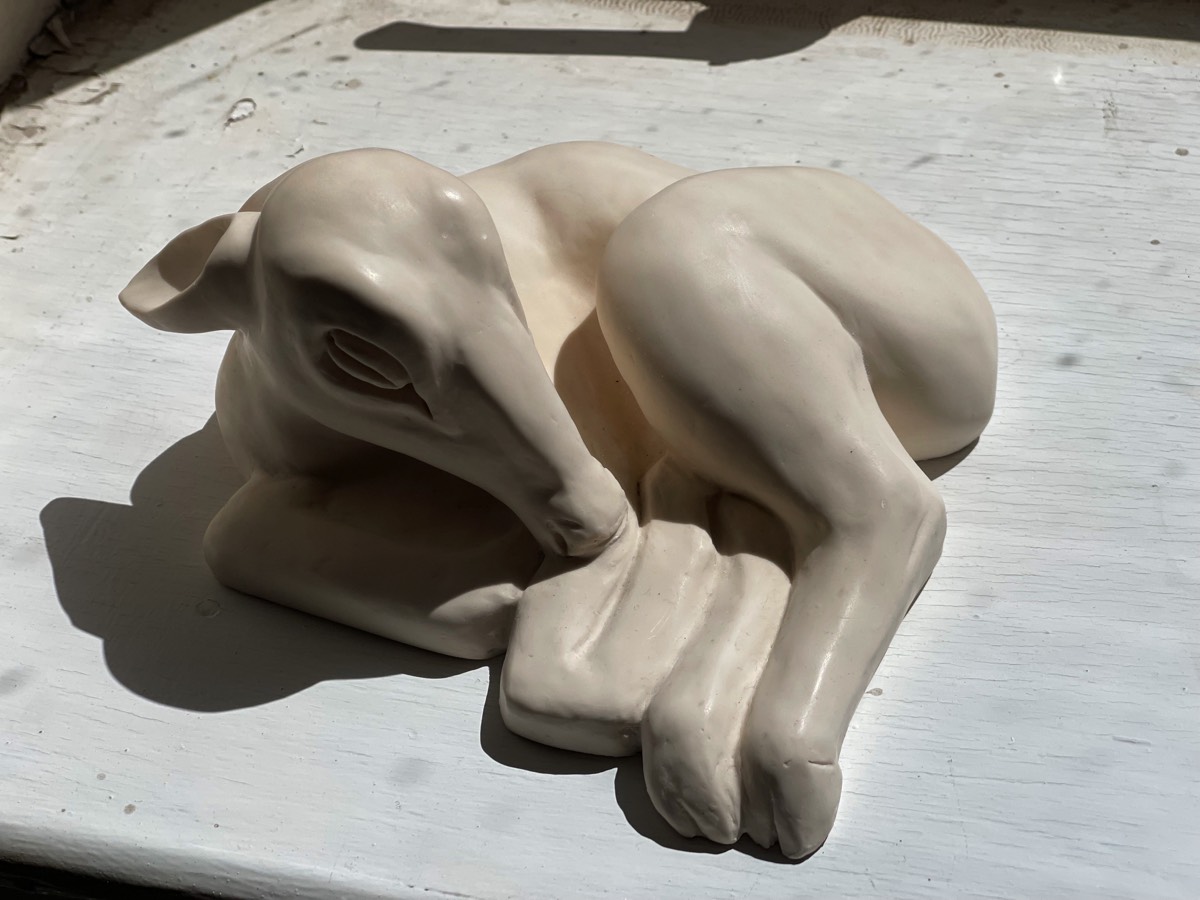
Sleeping Fawn Sculpture
White Plaster
This model is based on the Henri Gaudier-Brzeska Sleeping Fawn sculpture that is a firm favourite in the Kettle's Yard collection.
Handmade exclusively for Kettle's Yard in Jesmonite - a sustainable alternative to tradition resin that replicates the weight and coolness of bronze - the model is presented in a branded box.
Sleeping Fawn was created in 1913. It is one of two sculptures of fawns by Gaudier-Brzeska in the Kettle’s Yard collection, and among his more naturalistic works. According to Jim Ede, both sculptures were ‘the result of [a] vision of deer’ in Arundel Park which Gaudier visited for the day with his partner, Sophie Brzeska. That day, Gaudier-Brzeska made several life drawings, from which he later developed a series of fawn sculptures. The original version of Sleeping Fawn was carved in Seravezza marble, which was subsequently cast in plaster, and posthumously in bronze.
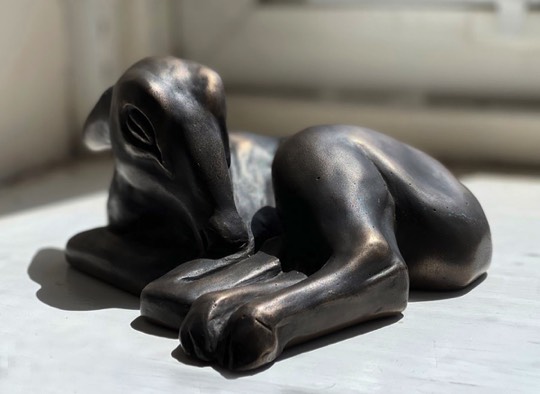
Sleeping Fawn Sculpture
Bronze Brown (Jesmonite)
This model is based on the Henri Gaudier-Brzeska Sleeping Fawn sculpture that is a firm favourite in the Kettle's Yard collection.
Handmade exclusively for Kettle's Yard in Jesmonite - a sustainable alternative to tradition resin that replicates the weight and coolness of bronze - the model is presented in a branded box.
Sleeping Fawn was created in 1913. It is one of two sculptures of fawns by Gaudier-Brzeska in the Kettle’s Yard collection, and among his more naturalistic works. According to Jim Ede, both sculptures were ‘the result of [a] vision of deer’ in Arundel Park which Gaudier visited for the day with his partner, Sophie Brzeska. That day, Gaudier-Brzeska made several life drawings, from which he later developed a series of fawn sculptures. The original version of Sleeping Fawn was carved in Seravezza marble, which was subsequently cast in plaster, and posthumously in bronze.
Henri - Gaudier Brzeska
Sculptures
Henri Gaudier-Brzeska (1891-1915) was one of the leading figures of European avant-garde sculpture. Gaudier played an important role in the development of modern sculpture in Britain, working alongside Ezra Pound, Jacob Epstein, Roger Fry, Wyndham Lewis and others.
Like many artists of his generation, his career was tragically cut short by the war. he lost his life at the age of just twenty-three.
His work was so expressive that even after such a short time of sculpting, his works are in all the large museums globally.
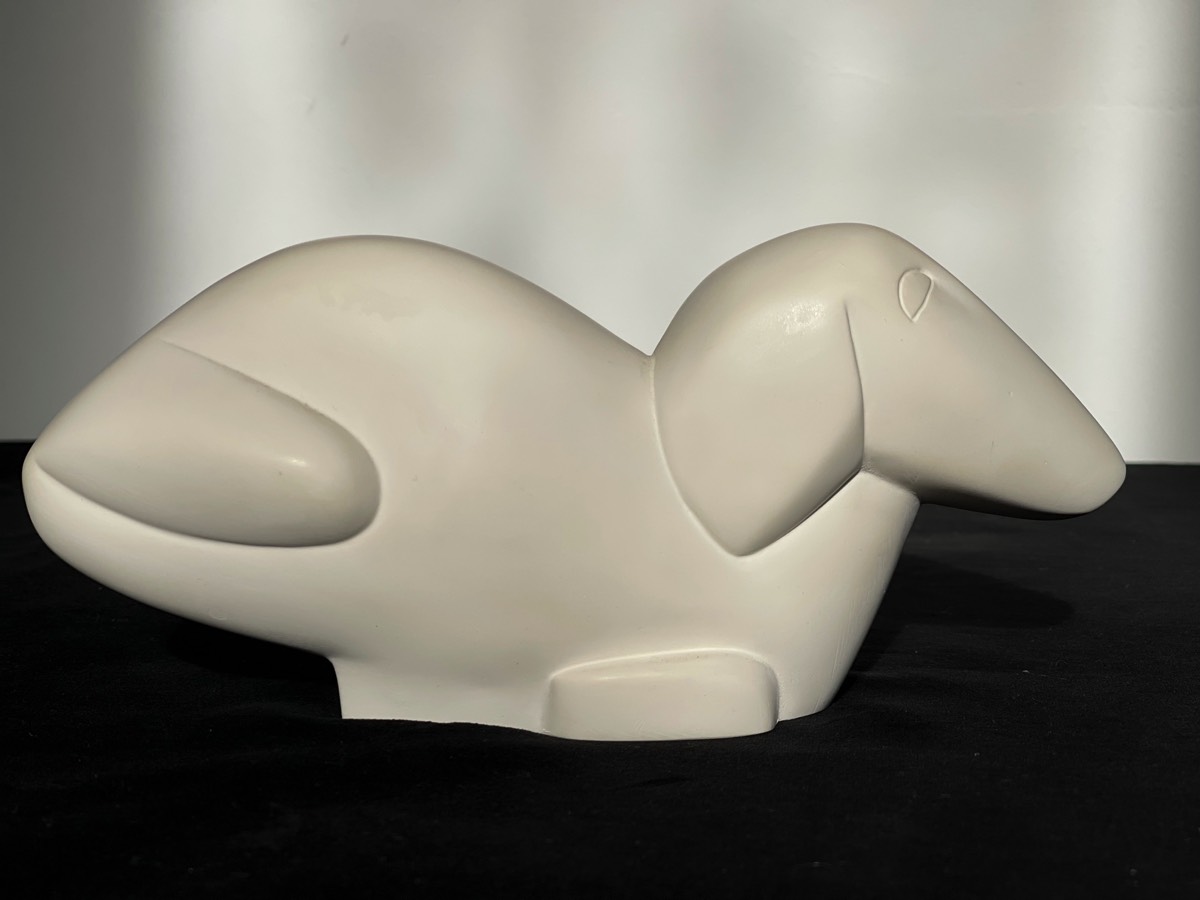
Gaudier-Brzeska Dog
White Plaster
This replica features Henri Gaudier-Brzeska's sculpture “Dog”. A posthumous bronze cast can be seen at Kettles Yard House and Gallery in Cambridge.
He himself became a founder member of the London Group and developed his distinctive carving style over the next few years. This sculpture is thought to be one of the last before his enlistment in the French army at the outbreak of World War I, when his life and career were tragically cut short at the age of 23, in 1915.
“It might be thought simple to make a sculpture like “Dog” by H. Gaudier-Brzeska, but so far as I know no one had done so in the whole world of sculpture, nor is it like any other sculptor’s work. It is essentially sculpture and at the same time is deeply realistic.
I have known a child take it to bed instead of his “Teddy Bear’. (Jim Ede 1984, A Way of Life).
Length 20cm
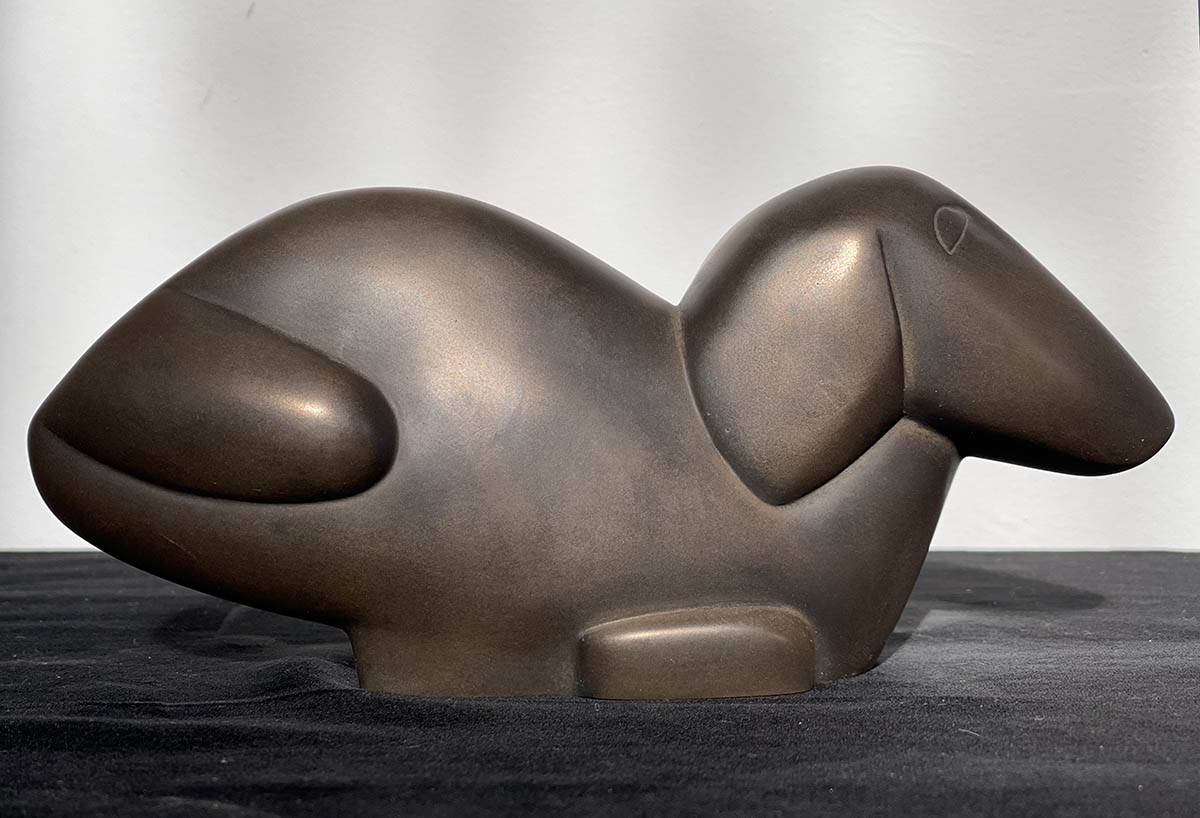
Gaudier-Brzeska Dog
Bronze Brown
This replica features Henri Gaudier-Brzeska's sculpture “Dog”. A posthumous bronze cast can be seen at Kettles Yard House and Gallery in Cambridge.
He himself became a founder member of the London Group and developed his distinctive carving style over the next few years. This sculpture is thought to be one of the last before his enlistment in the French army at the outbreak of World War I, when his life and career were tragically cut short at the age of 23, in 1915.
“It might be thought simple to make a sculpture like “Dog” by H. Gaudier-Brzeska, but so far as I know no one had done so in the whole world of sculpture, nor is it like any other sculptor’s work. It is essentially sculpture and at the same time is deeply realistic.
I have known a child take it to bed instead of his “Teddy Bear’. (Jim Ede 1984, A Way of Life).
Length 20cm

Sleeping Fawn Sculpture
White Plaster
This model is based on the Henri Gaudier-Brzeska Sleeping Fawn sculpture that is a firm favourite in the Kettle's Yard collection.
Handmade exclusively for Kettle's Yard in Jesmonite - a sustainable alternative to tradition resin that replicates the weight and coolness of bronze - the model is presented in a branded box.
Sleeping Fawn was created in 1913. It is one of two sculptures of fawns by Gaudier-Brzeska in the Kettle’s Yard collection, and among his more naturalistic works. According to Jim Ede, both sculptures were ‘the result of [a] vision of deer’ in Arundel Park which Gaudier visited for the day with his partner, Sophie Brzeska. That day, Gaudier-Brzeska made several life drawings, from which he later developed a series of fawn sculptures. The original version of Sleeping Fawn was carved in Seravezza marble, which was subsequently cast in plaster, and posthumously in bronze.
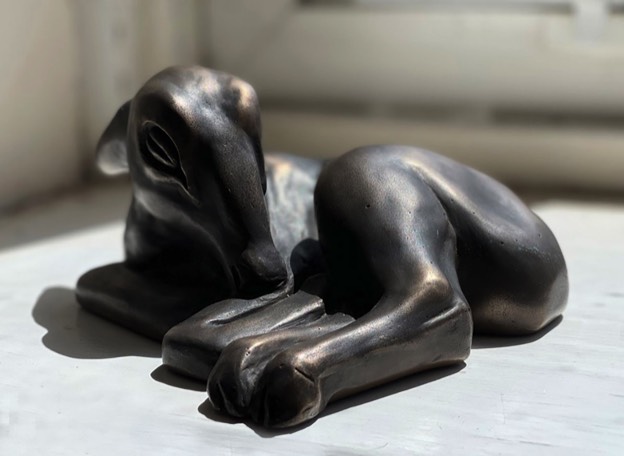
Sleeping Fawn Sculpture
Bronze Brown (Jesmonite)
This model is based on the Henri Gaudier-Brzeska Sleeping Fawn sculpture that is a firm favourite in the Kettle's Yard collection.
Handmade exclusively for Kettle's Yard in Jesmonite - a sustainable alternative to tradition resin that replicates the weight and coolness of bronze - the model is presented in a branded box.
Sleeping Fawn was created in 1913. It is one of two sculptures of fawns by Gaudier-Brzeska in the Kettle’s Yard collection, and among his more naturalistic works. According to Jim Ede, both sculptures were ‘the result of [a] vision of deer’ in Arundel Park which Gaudier visited for the day with his partner, Sophie Brzeska. That day, Gaudier-Brzeska made several life drawings, from which he later developed a series of fawn sculptures. The original version of Sleeping Fawn was carved in Seravezza marble, which was subsequently cast in plaster, and posthumously in bronze.



